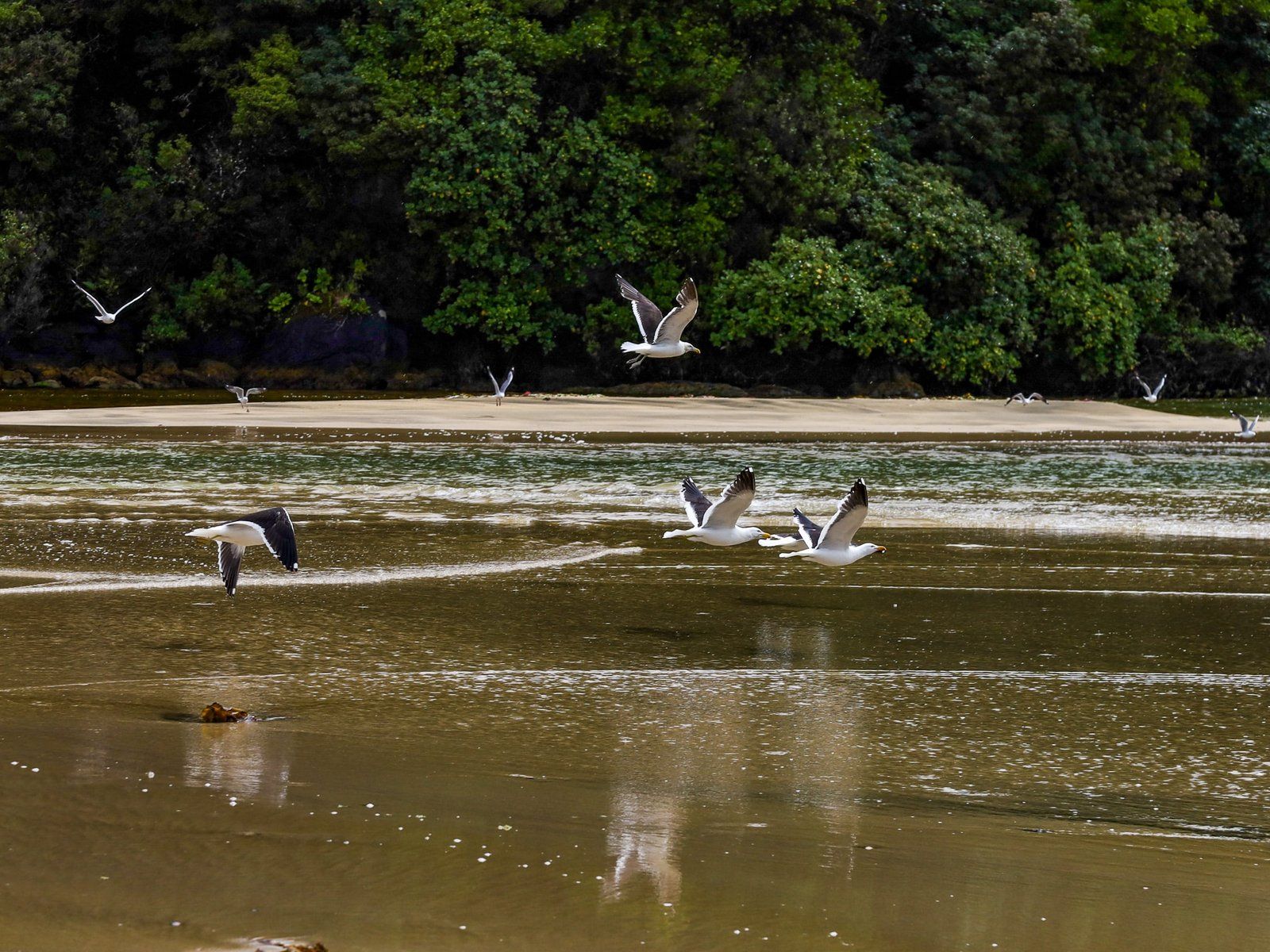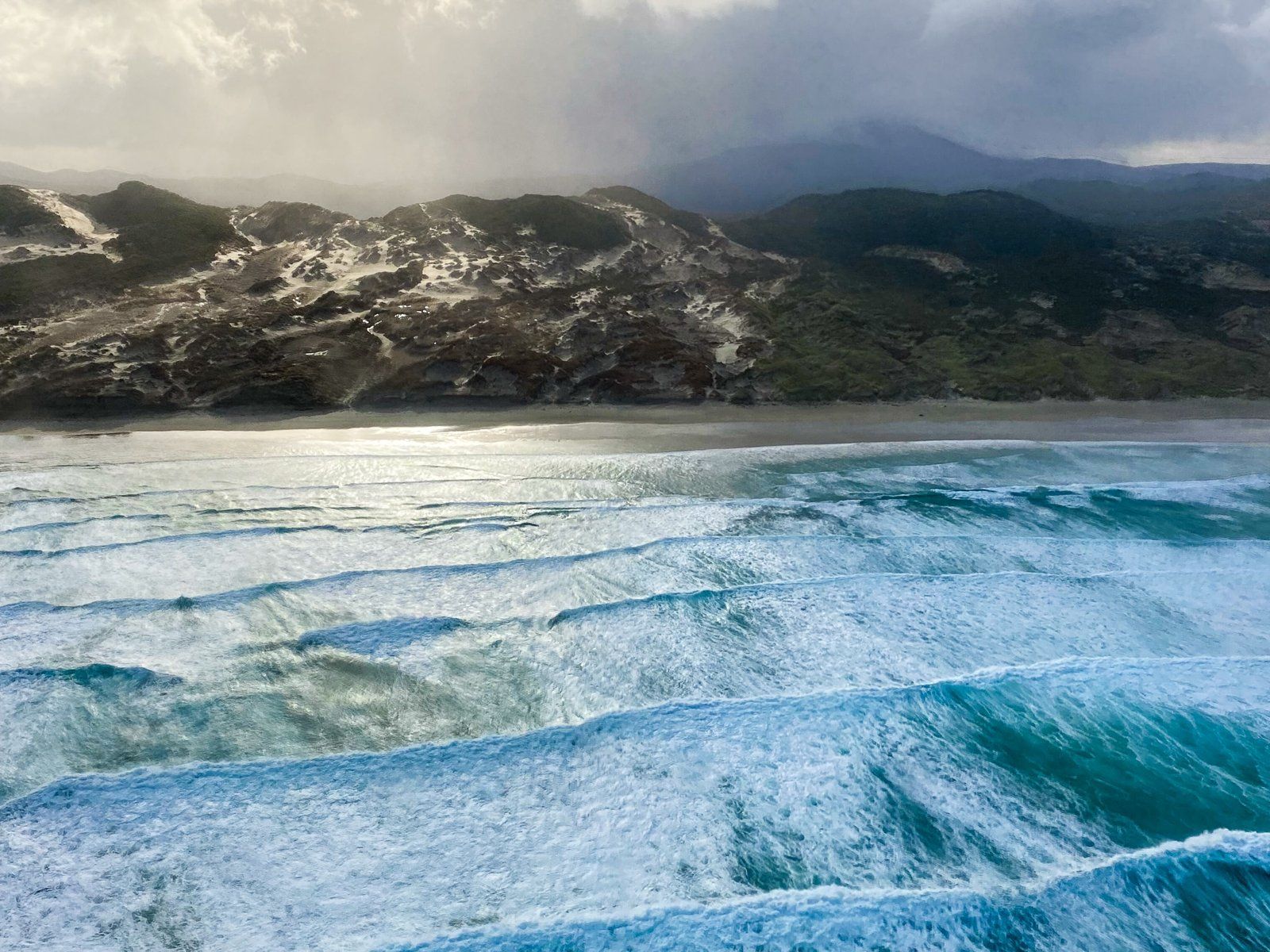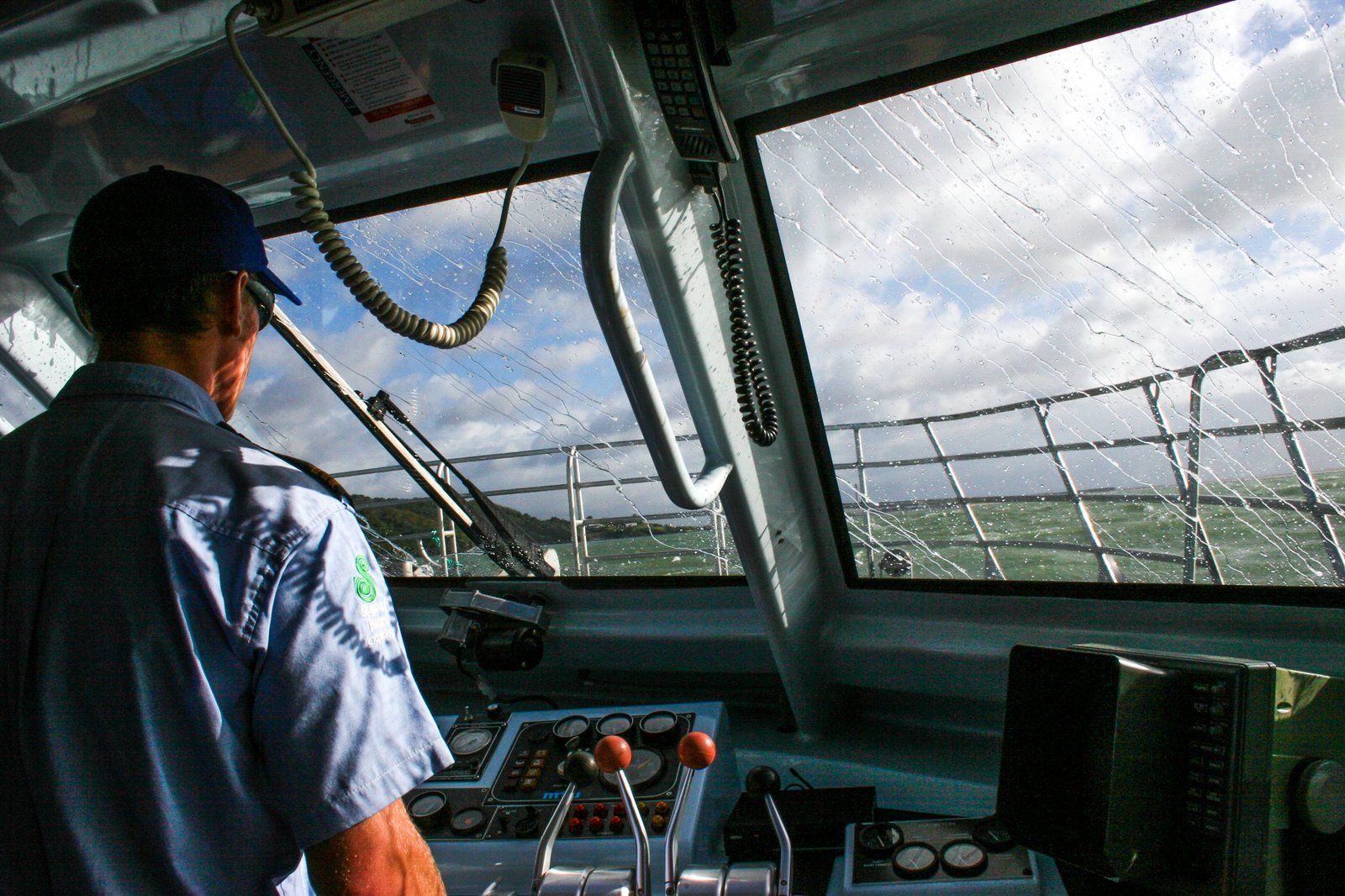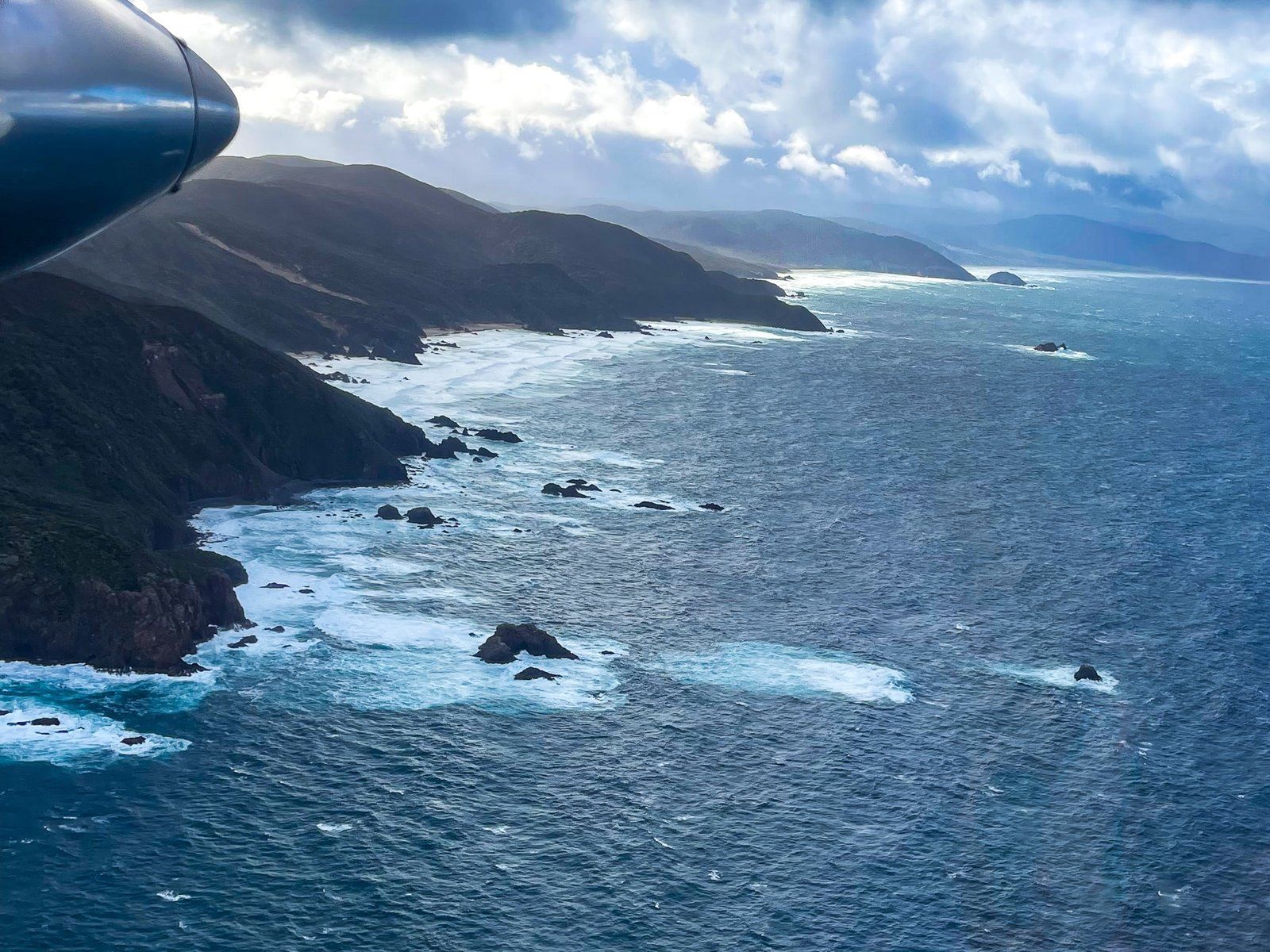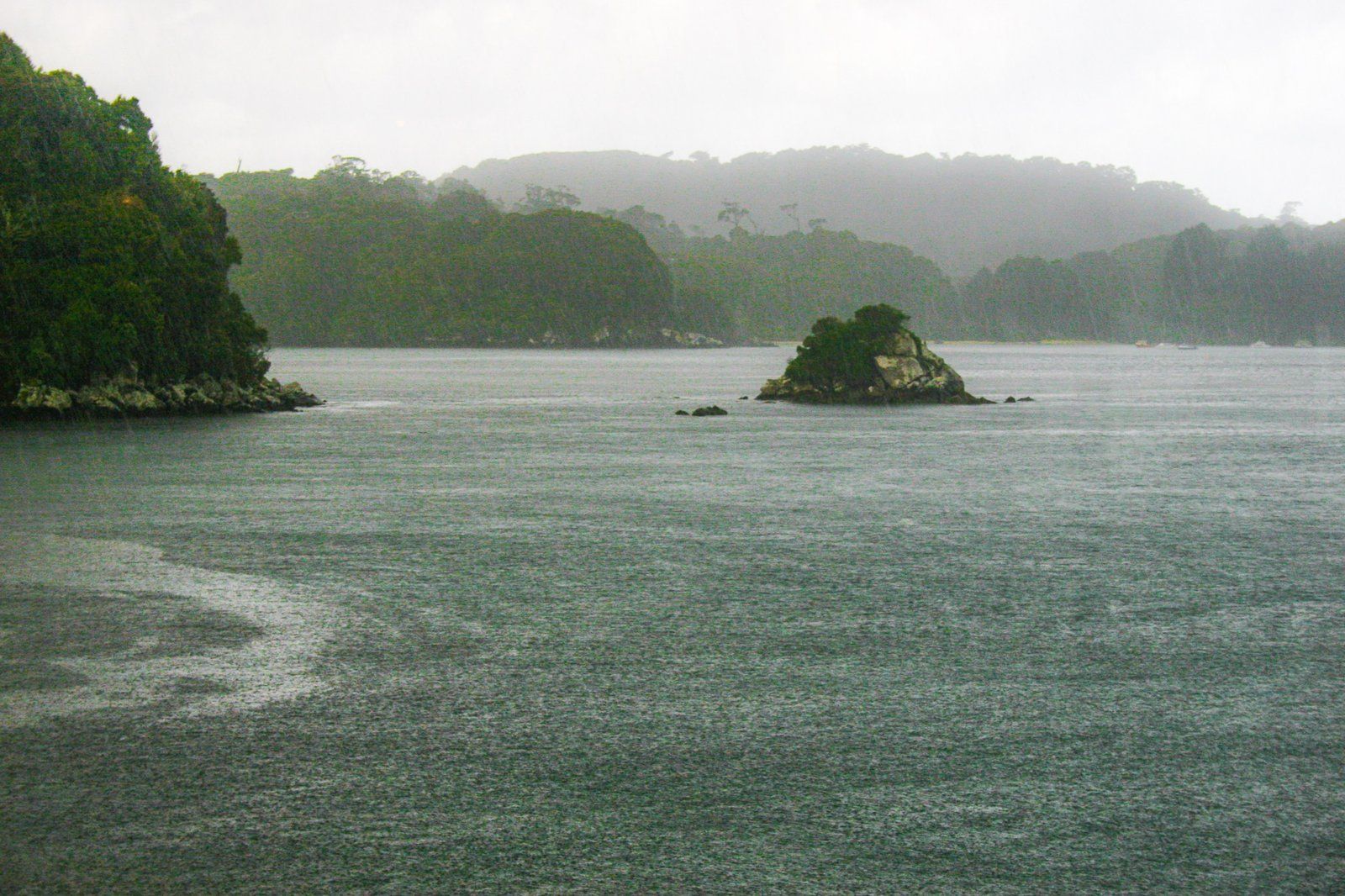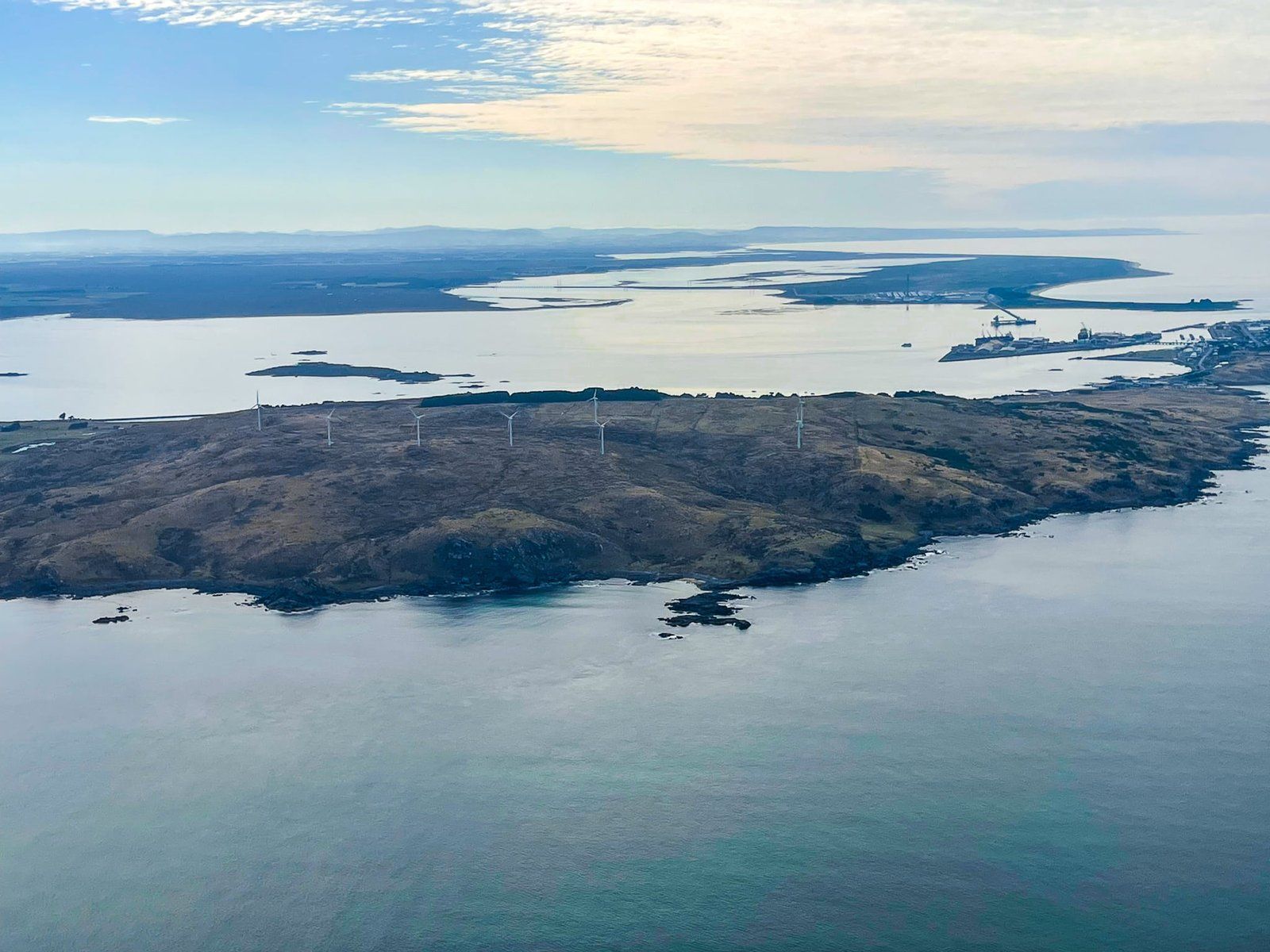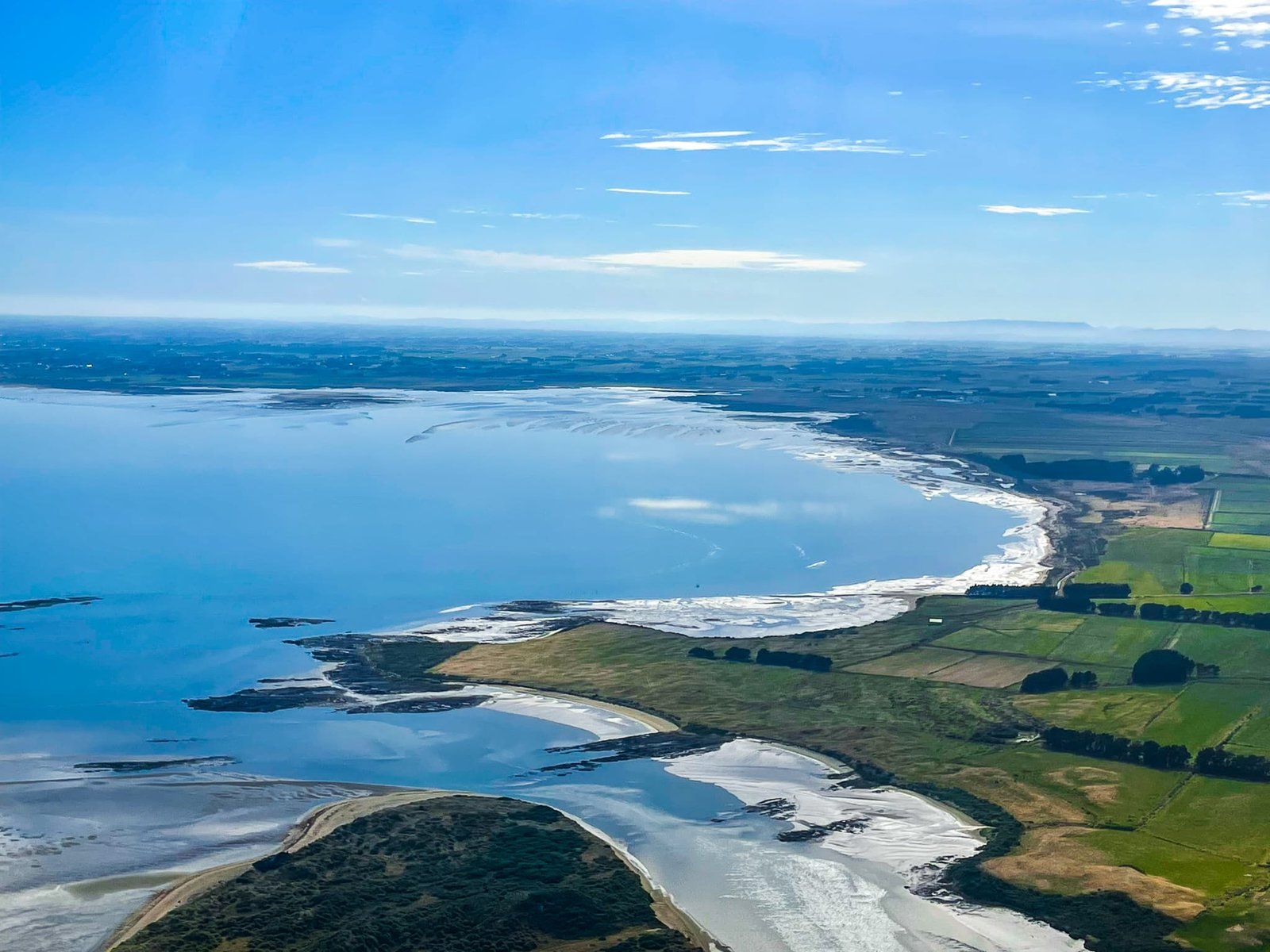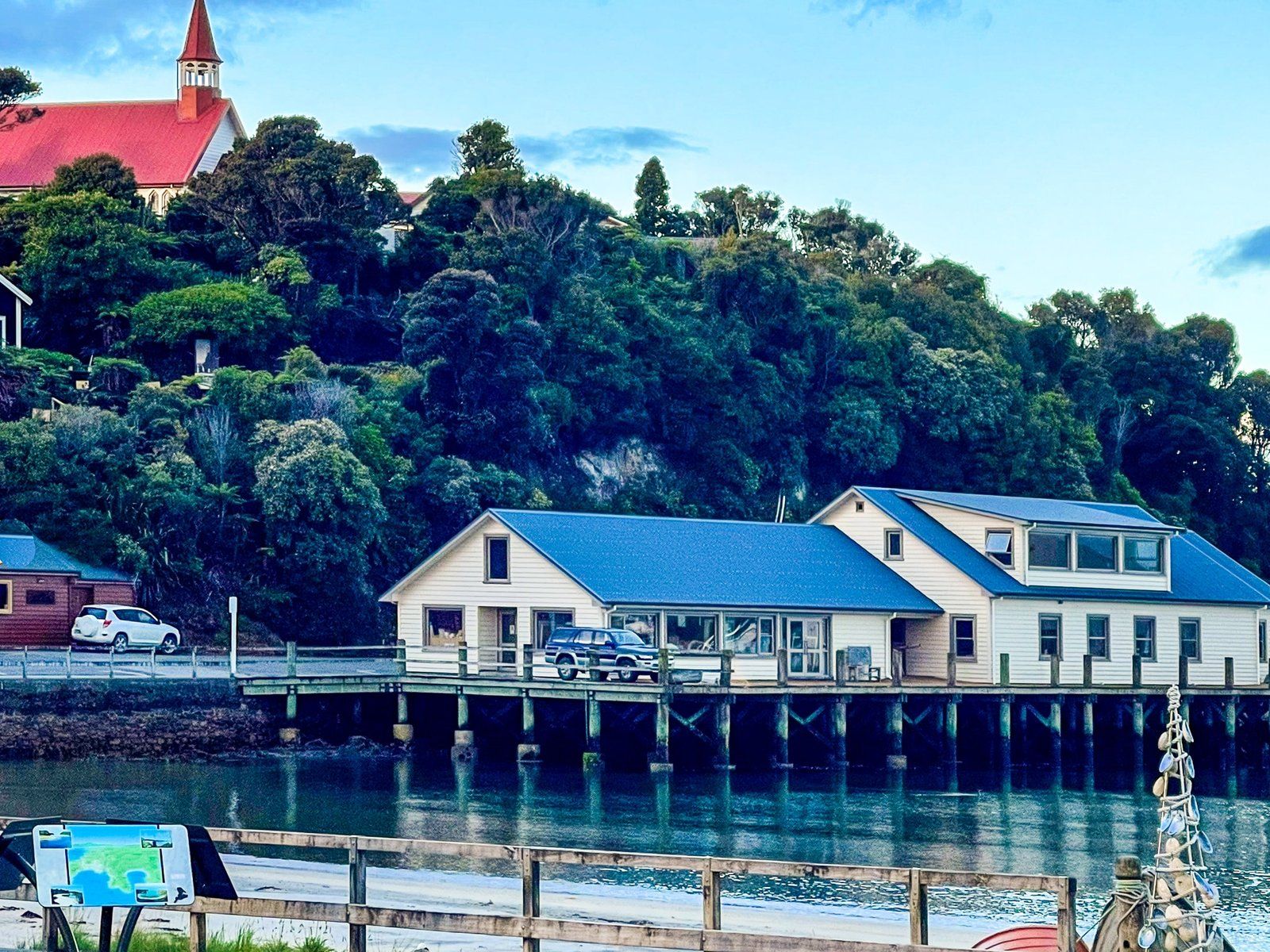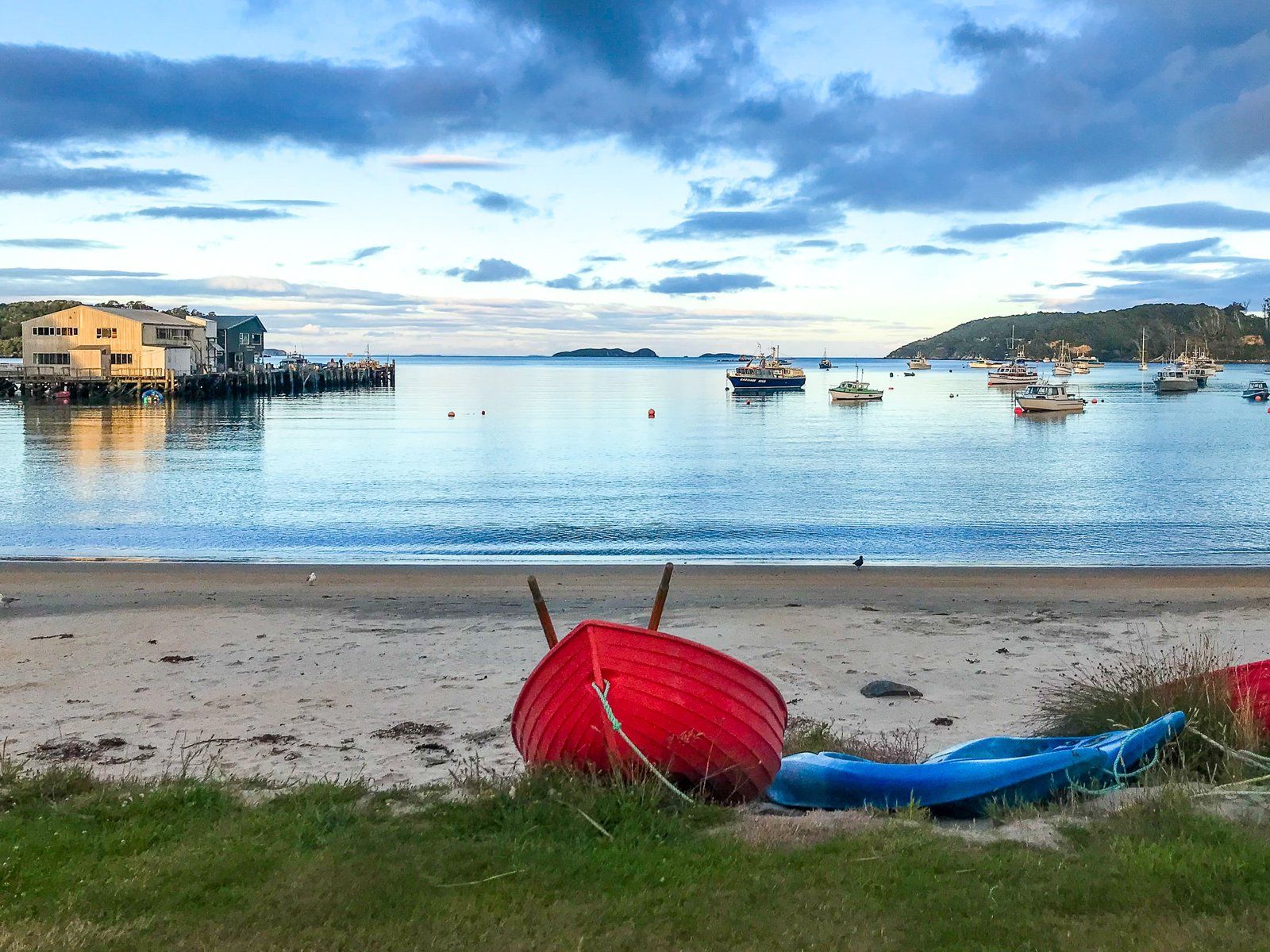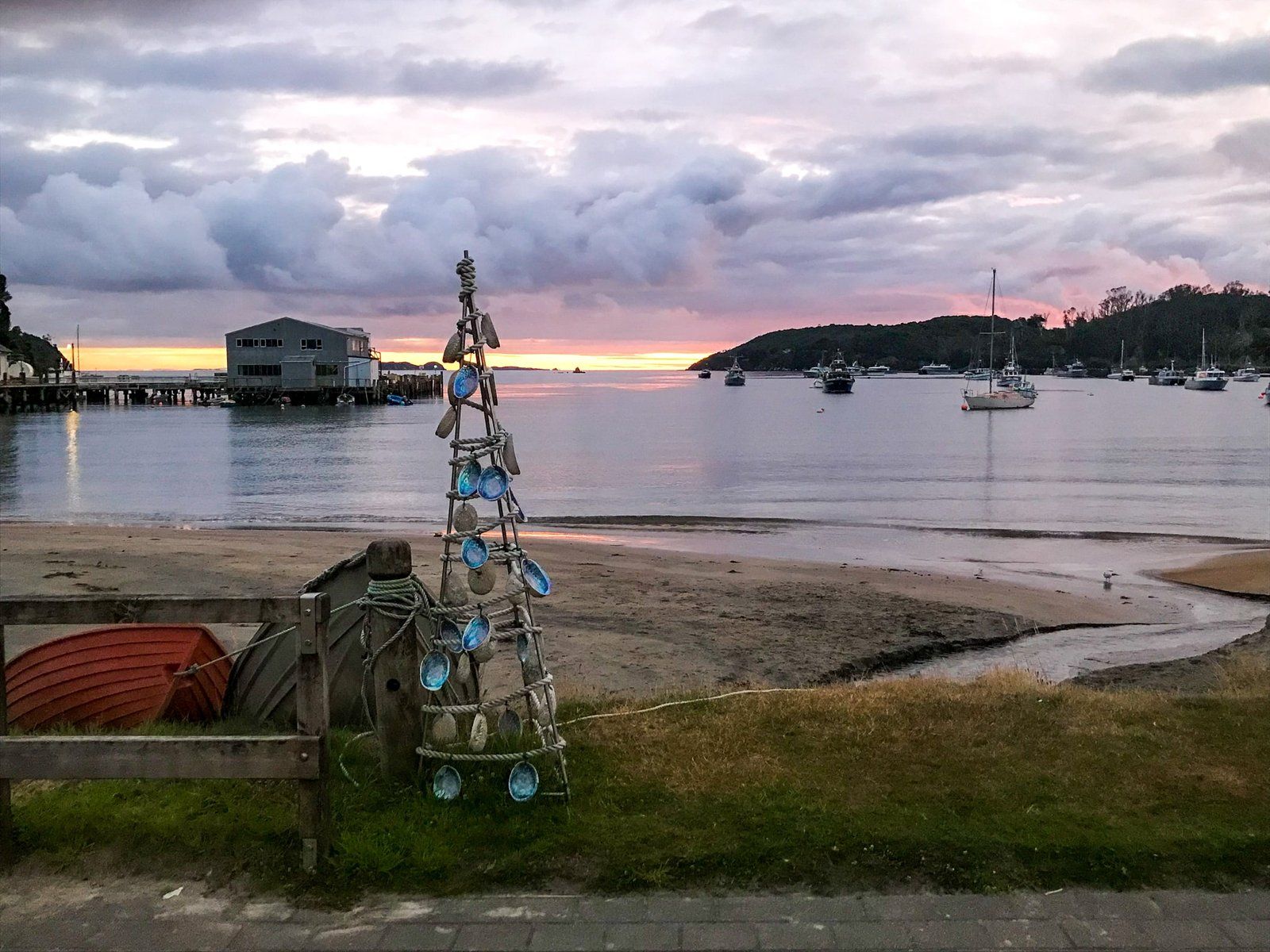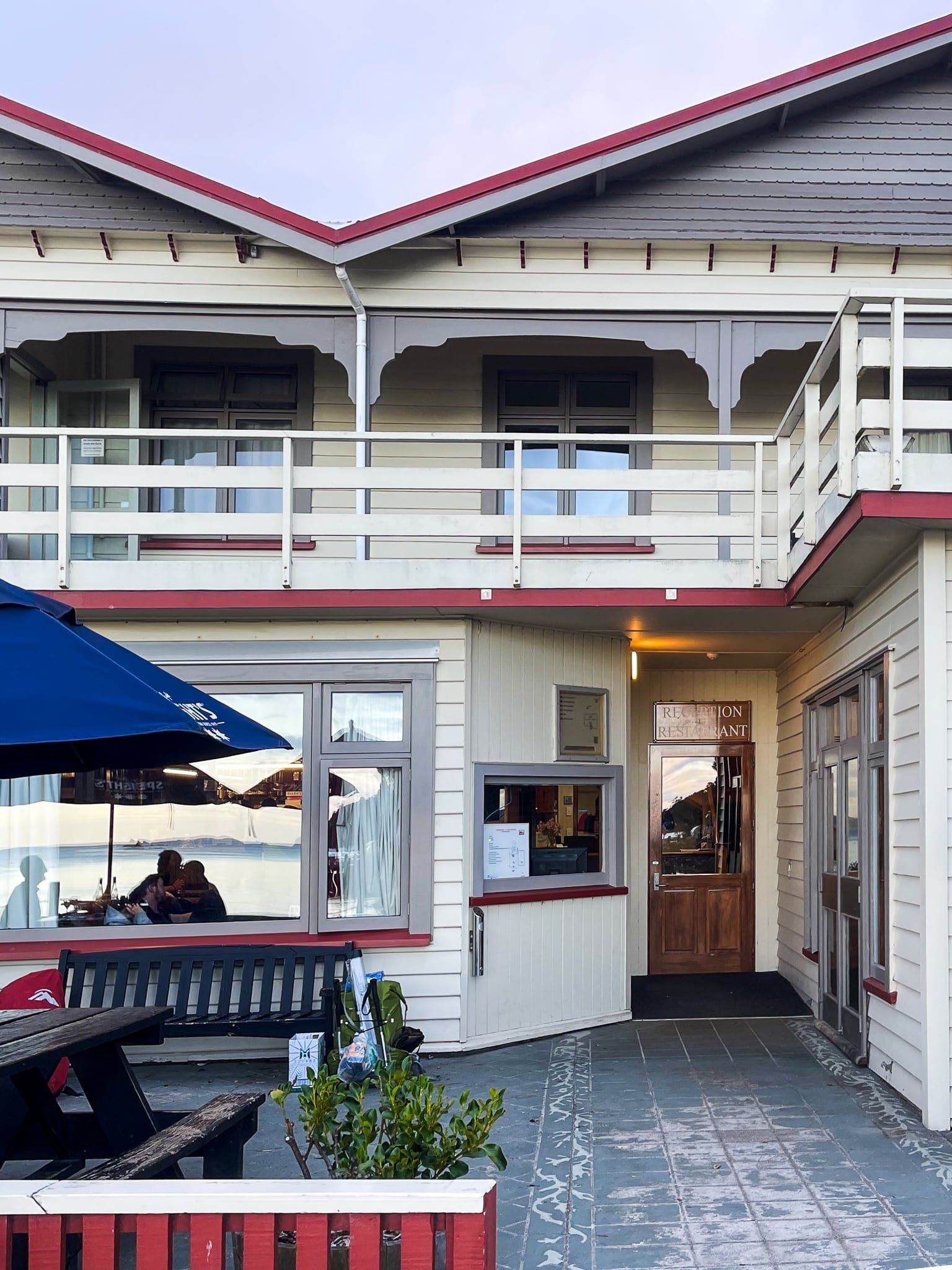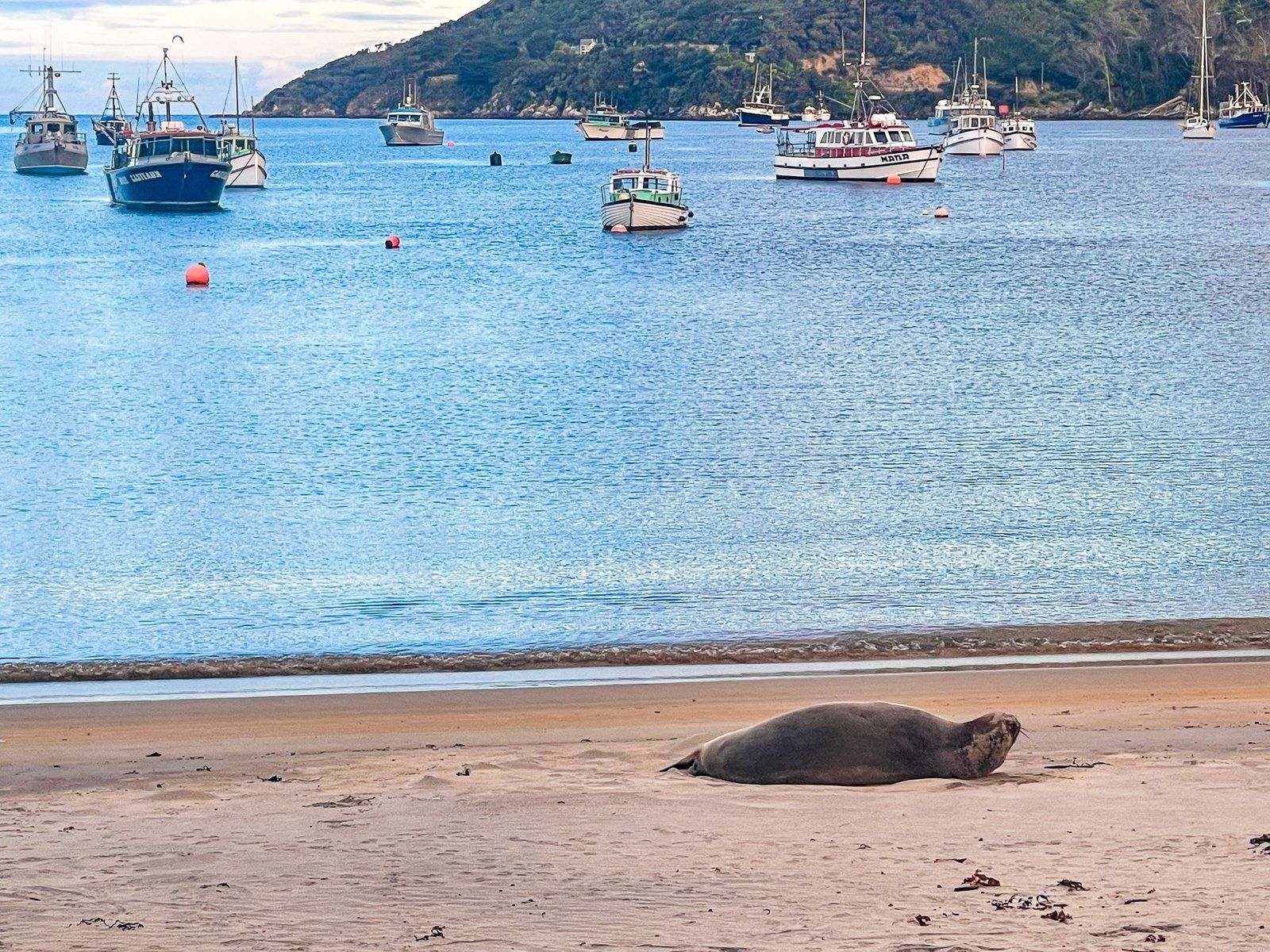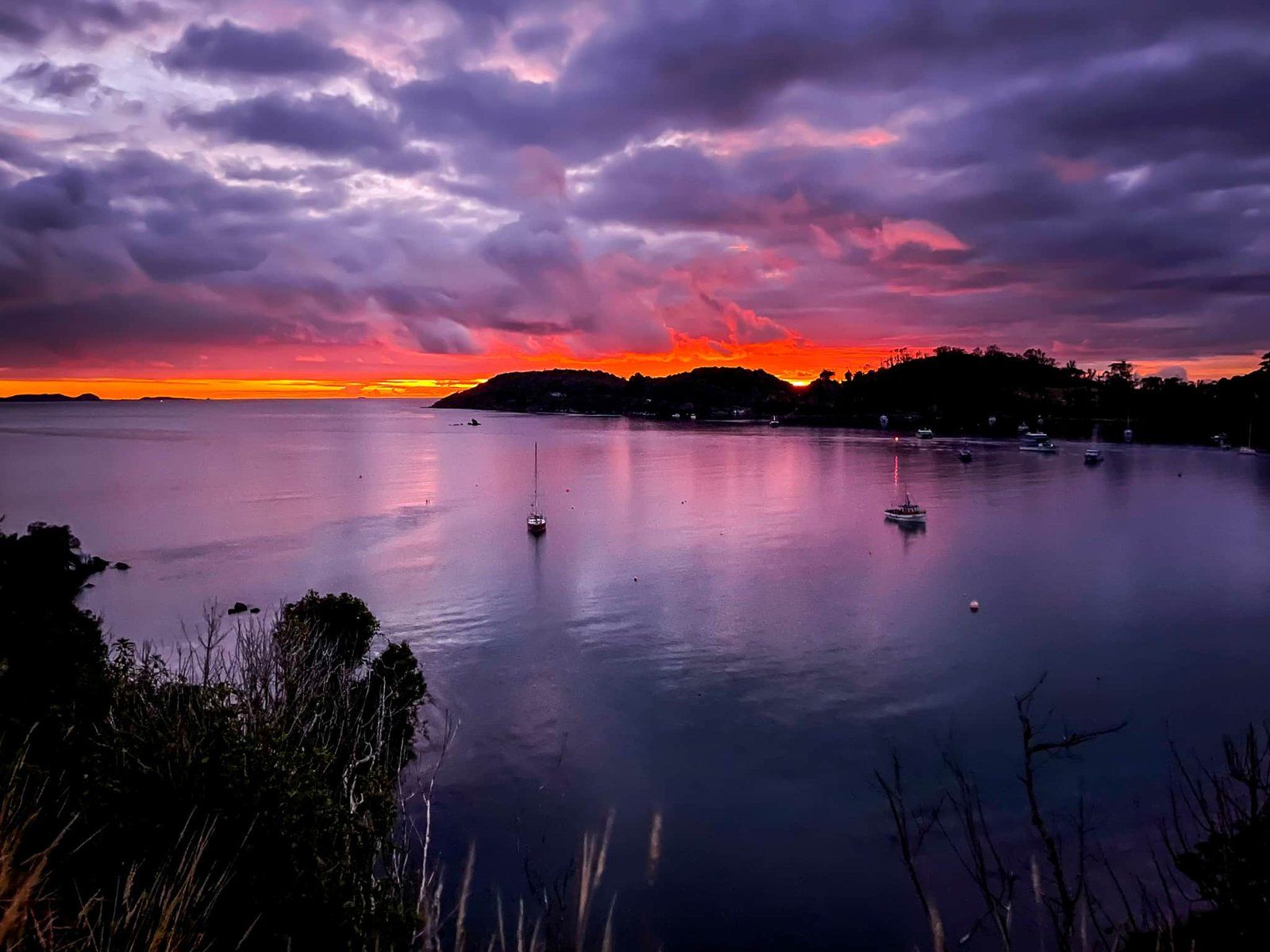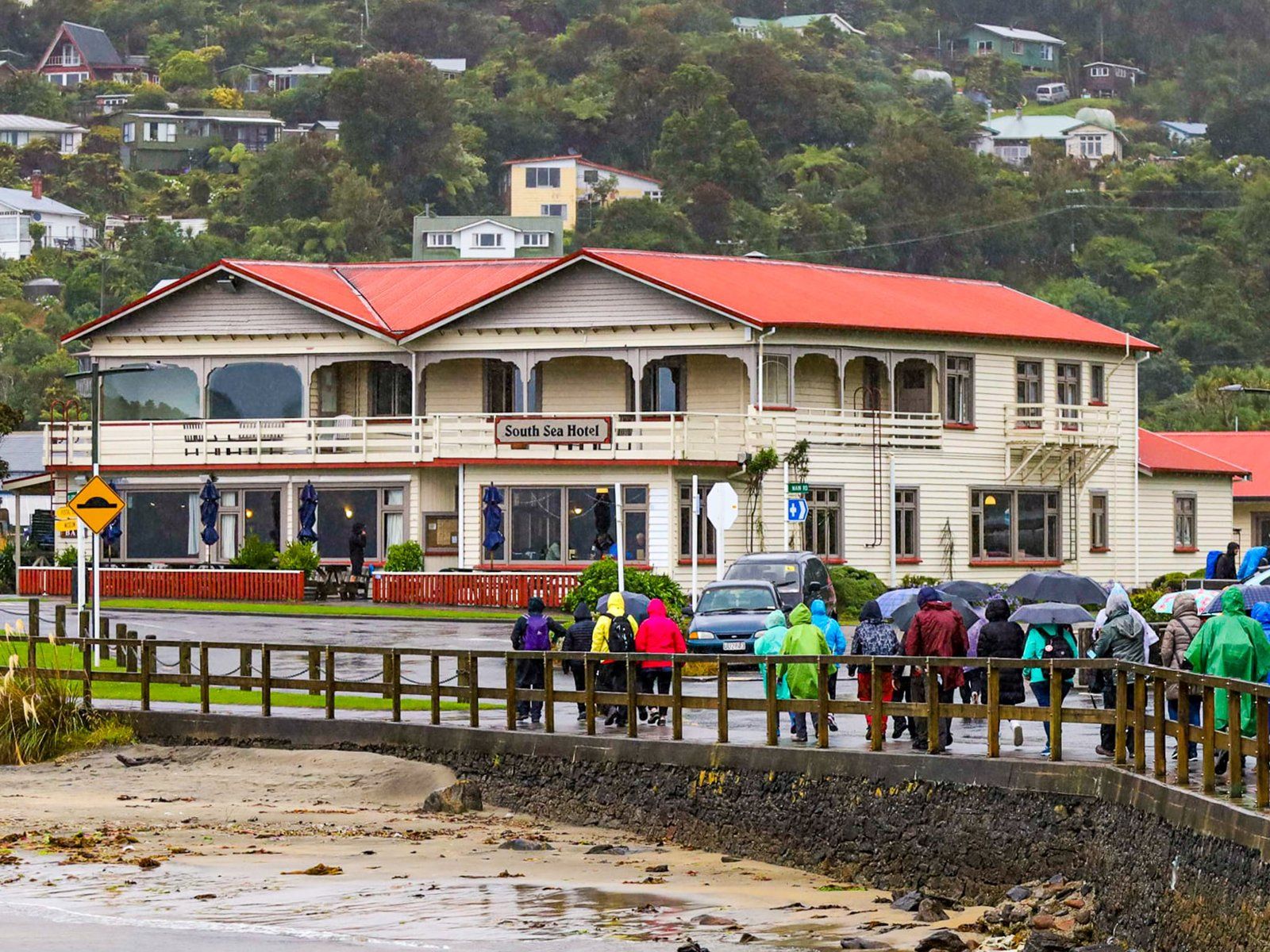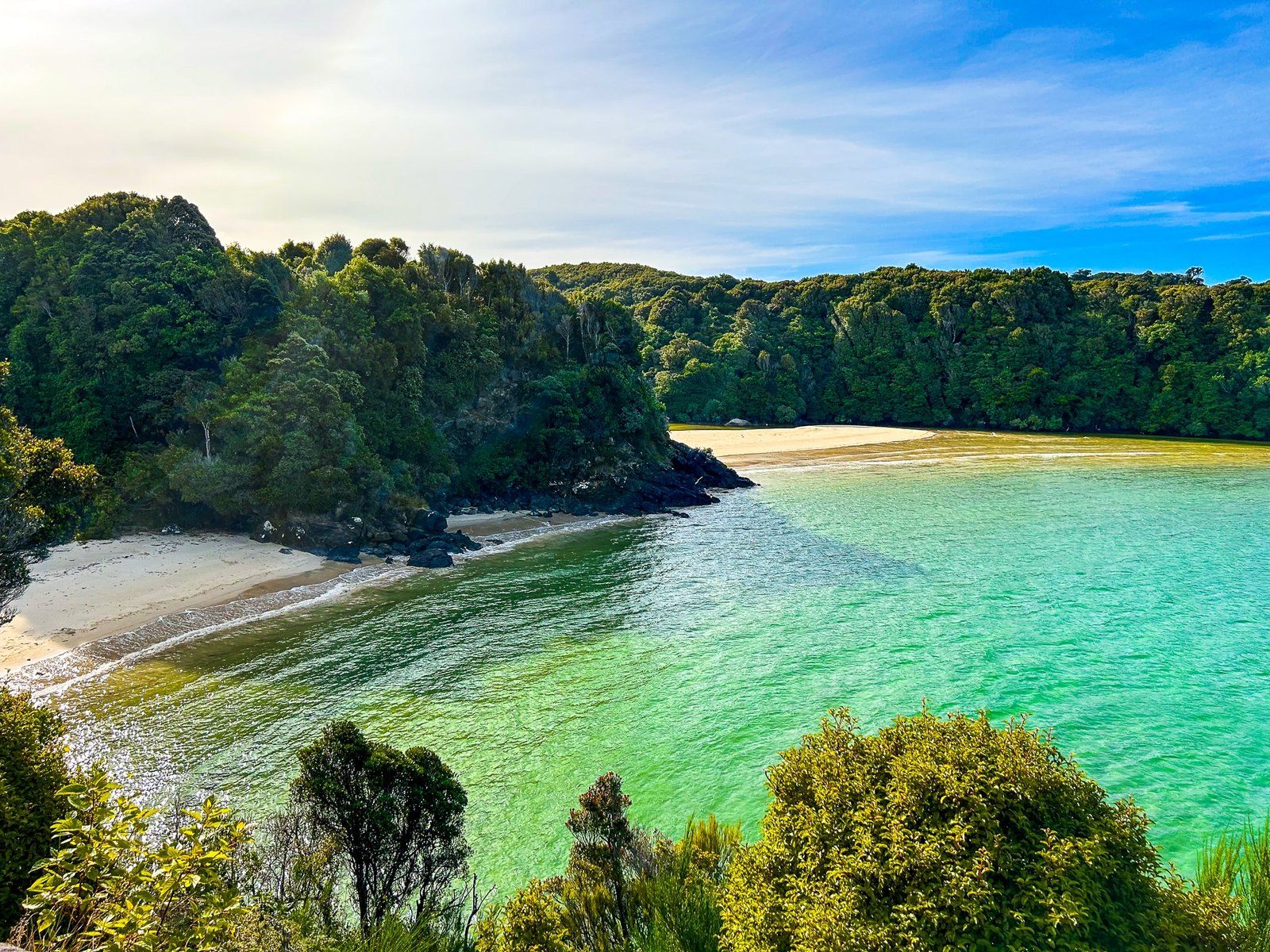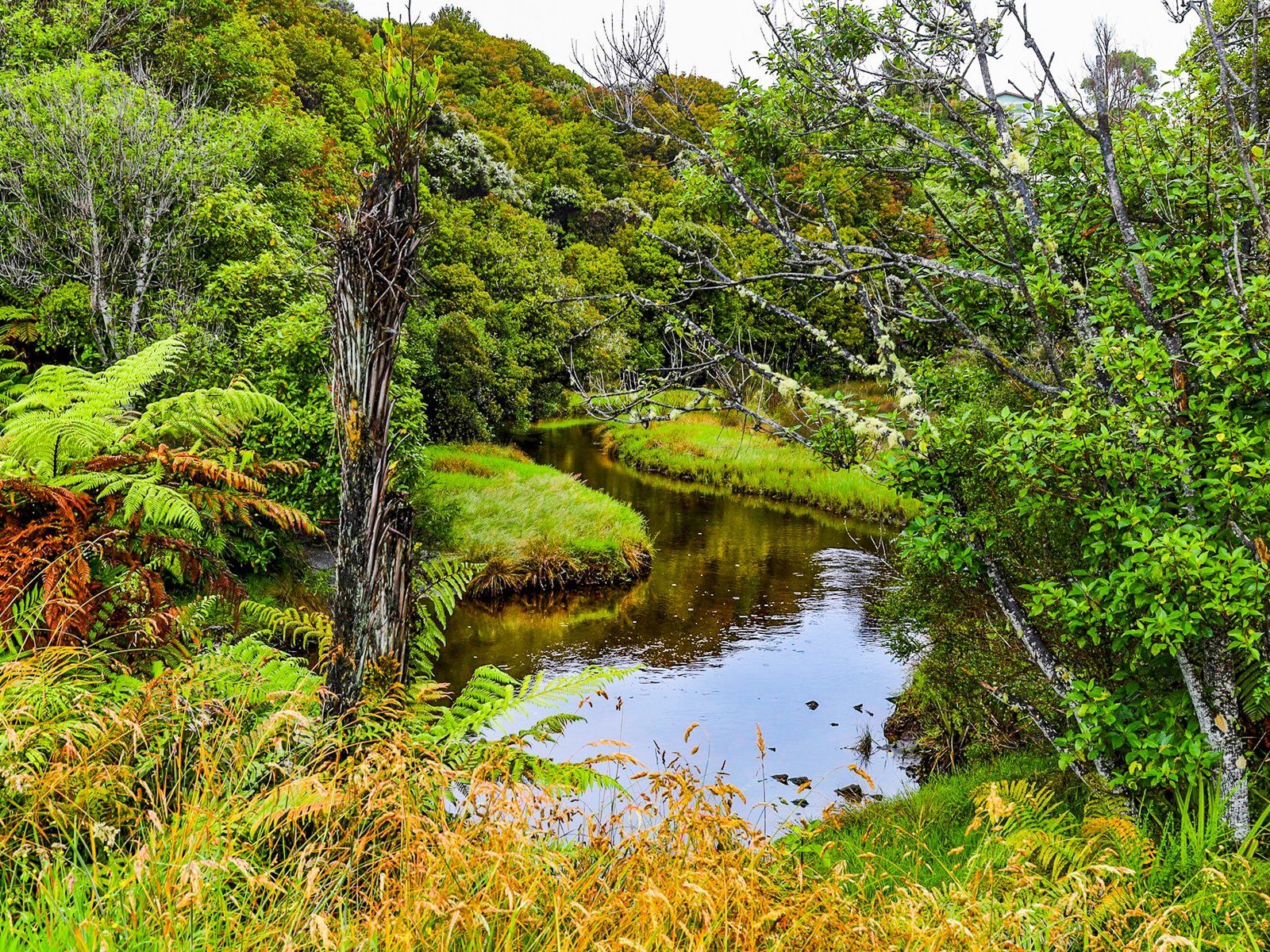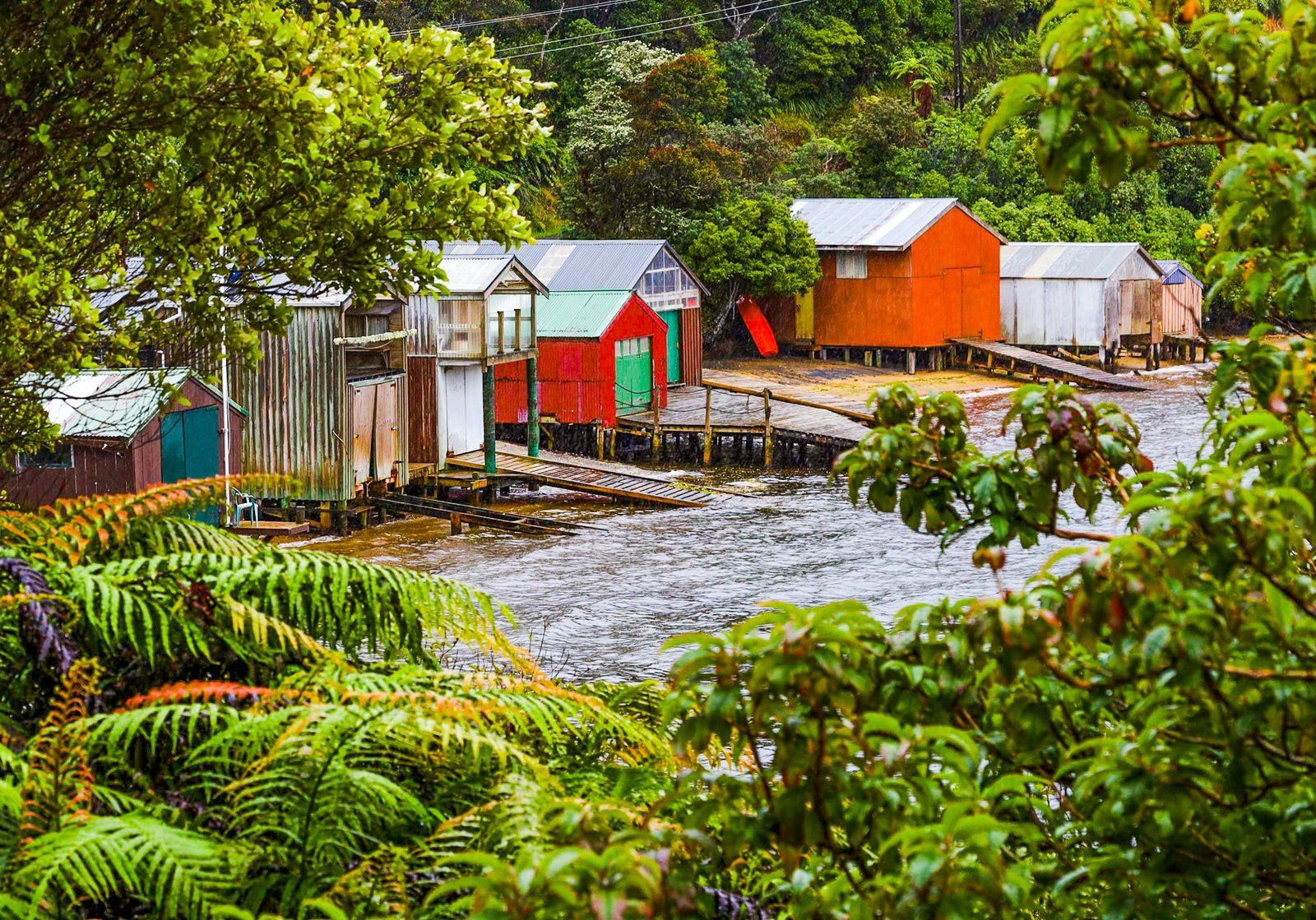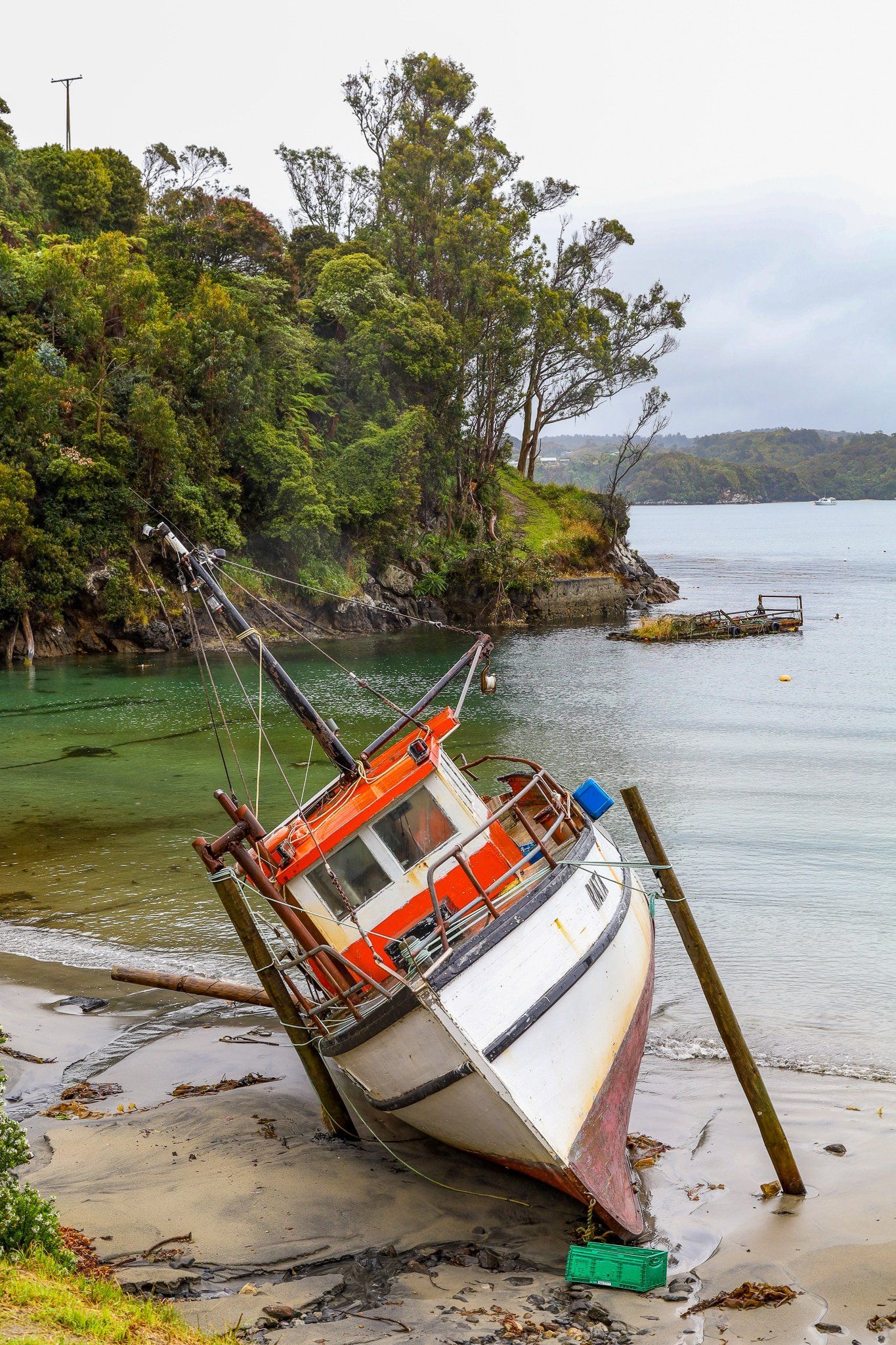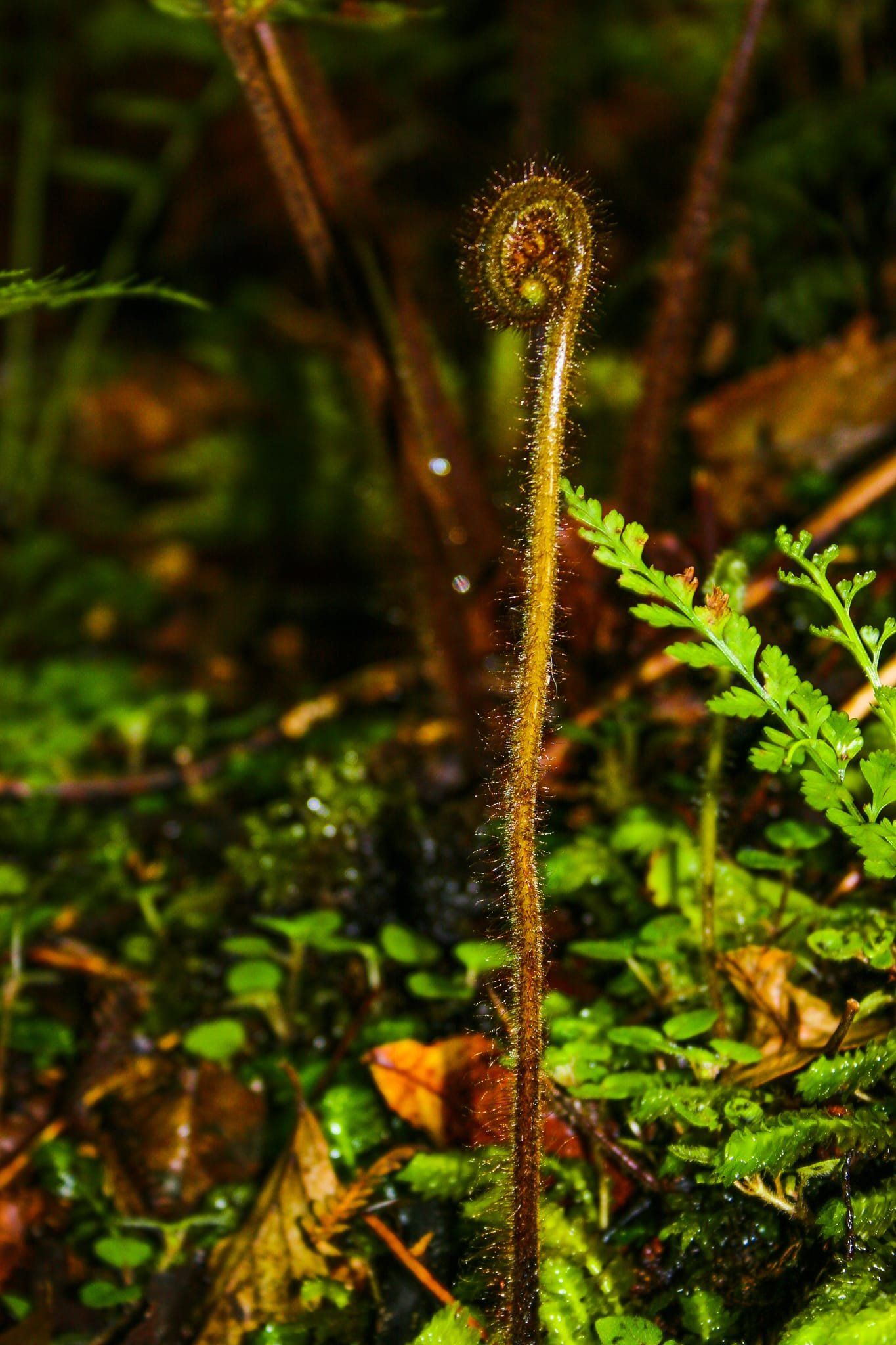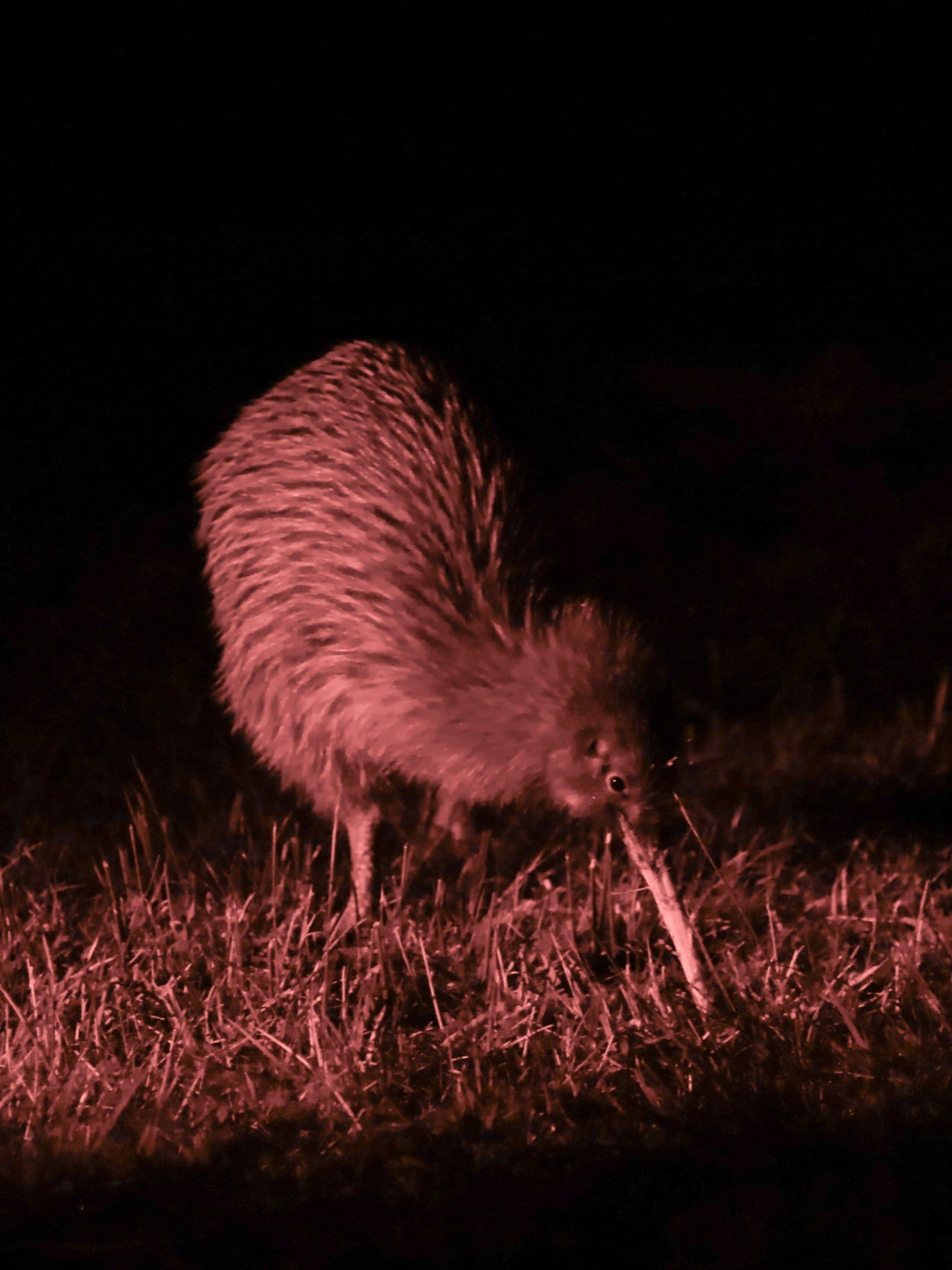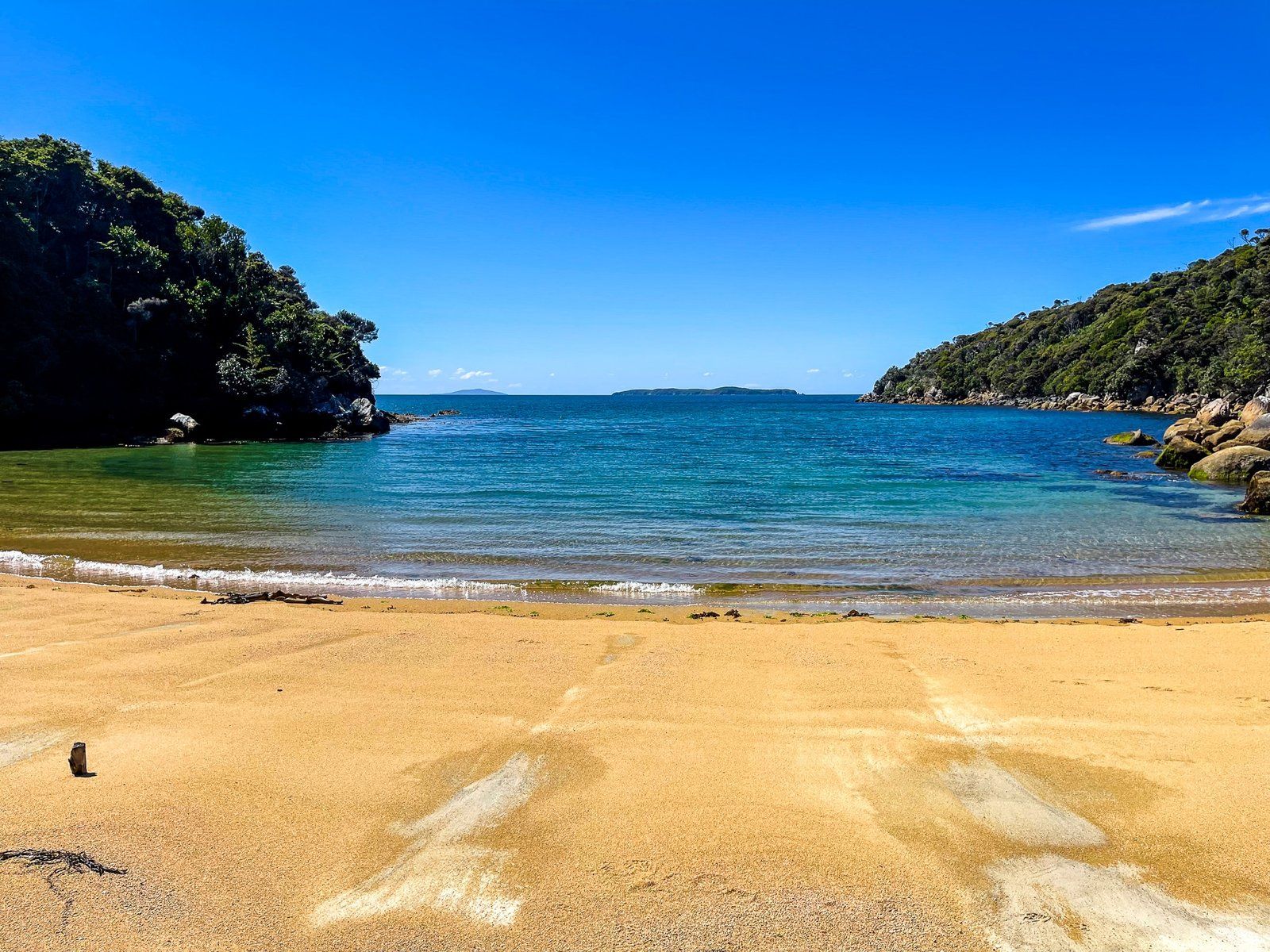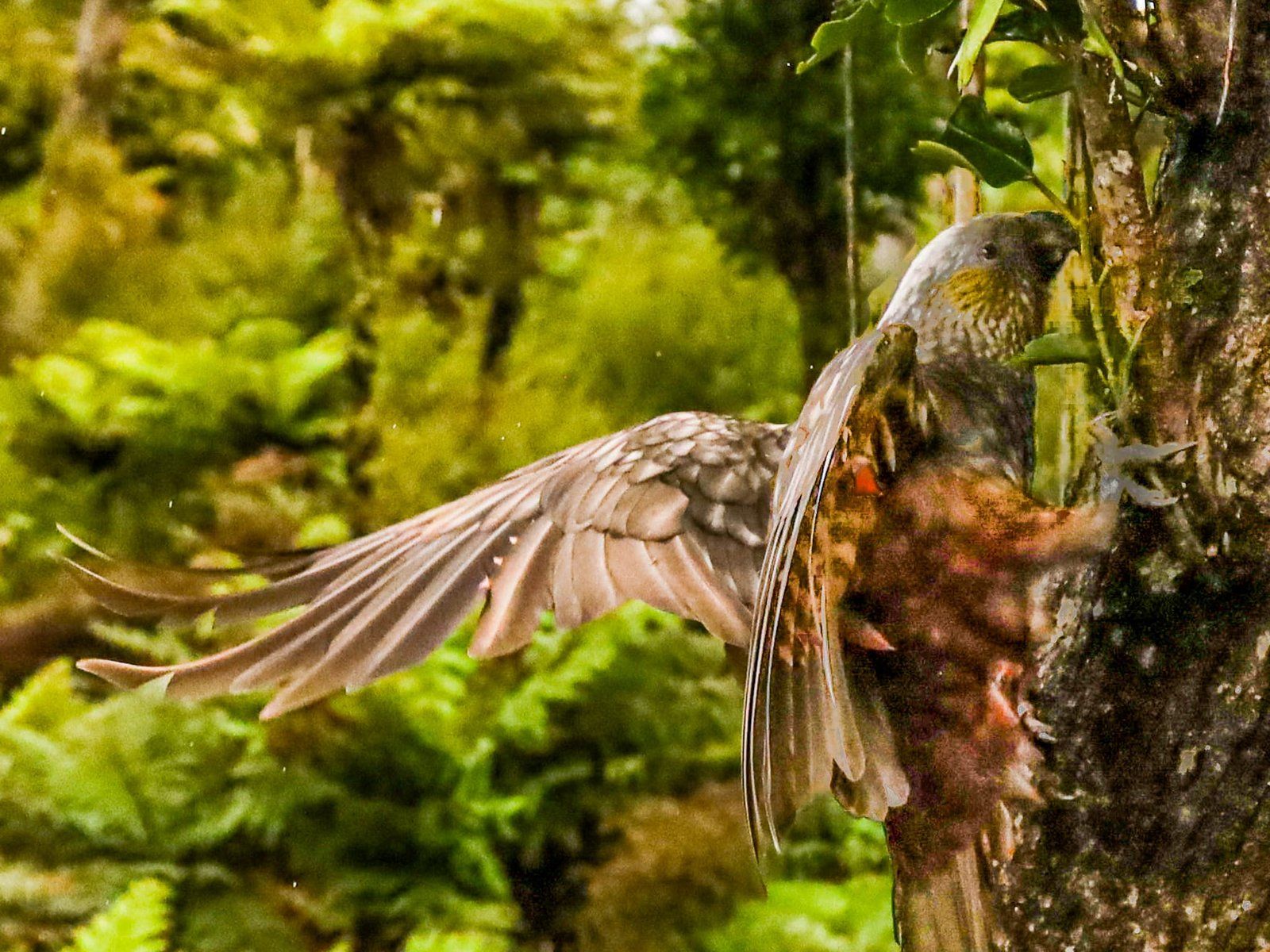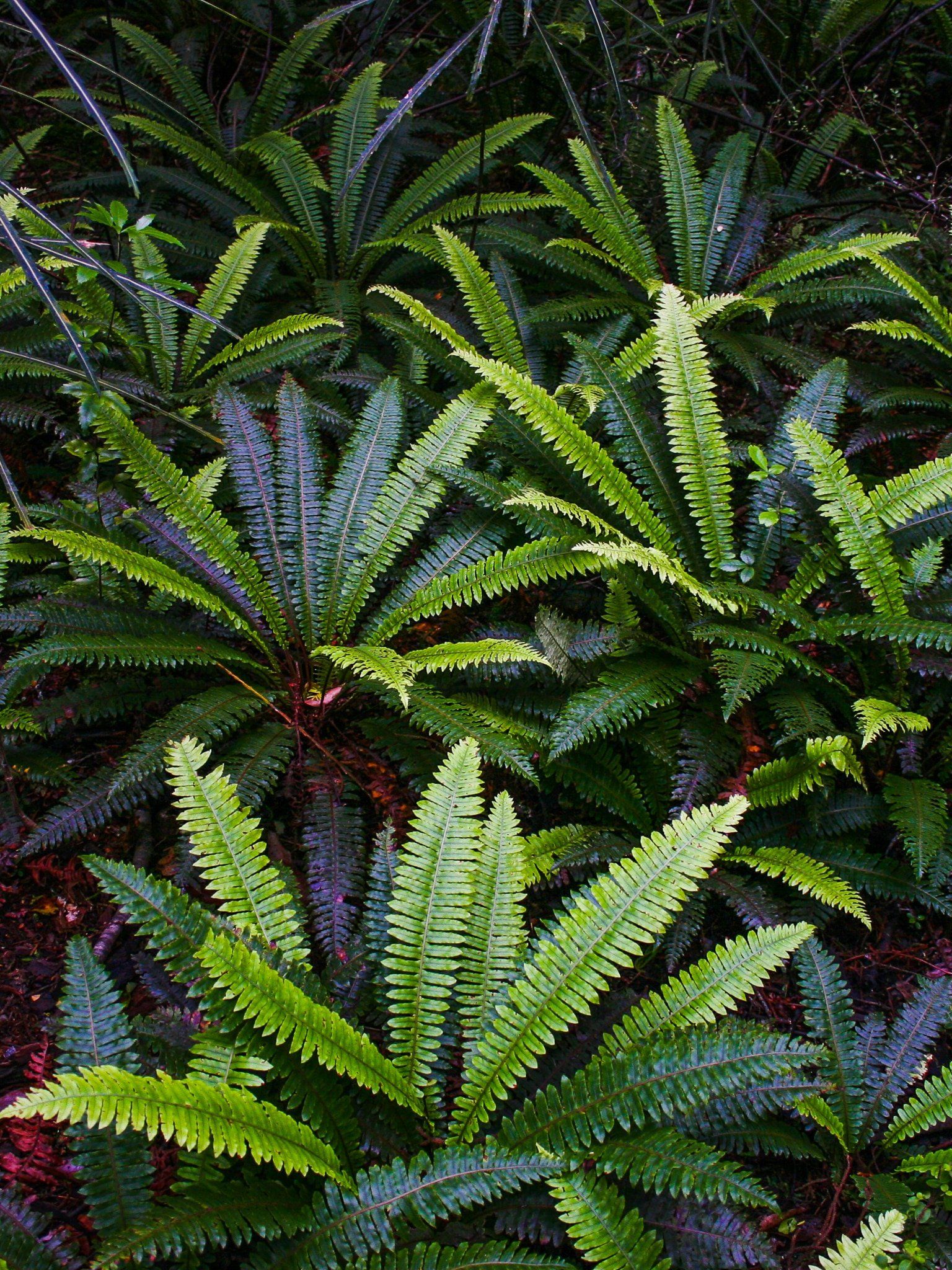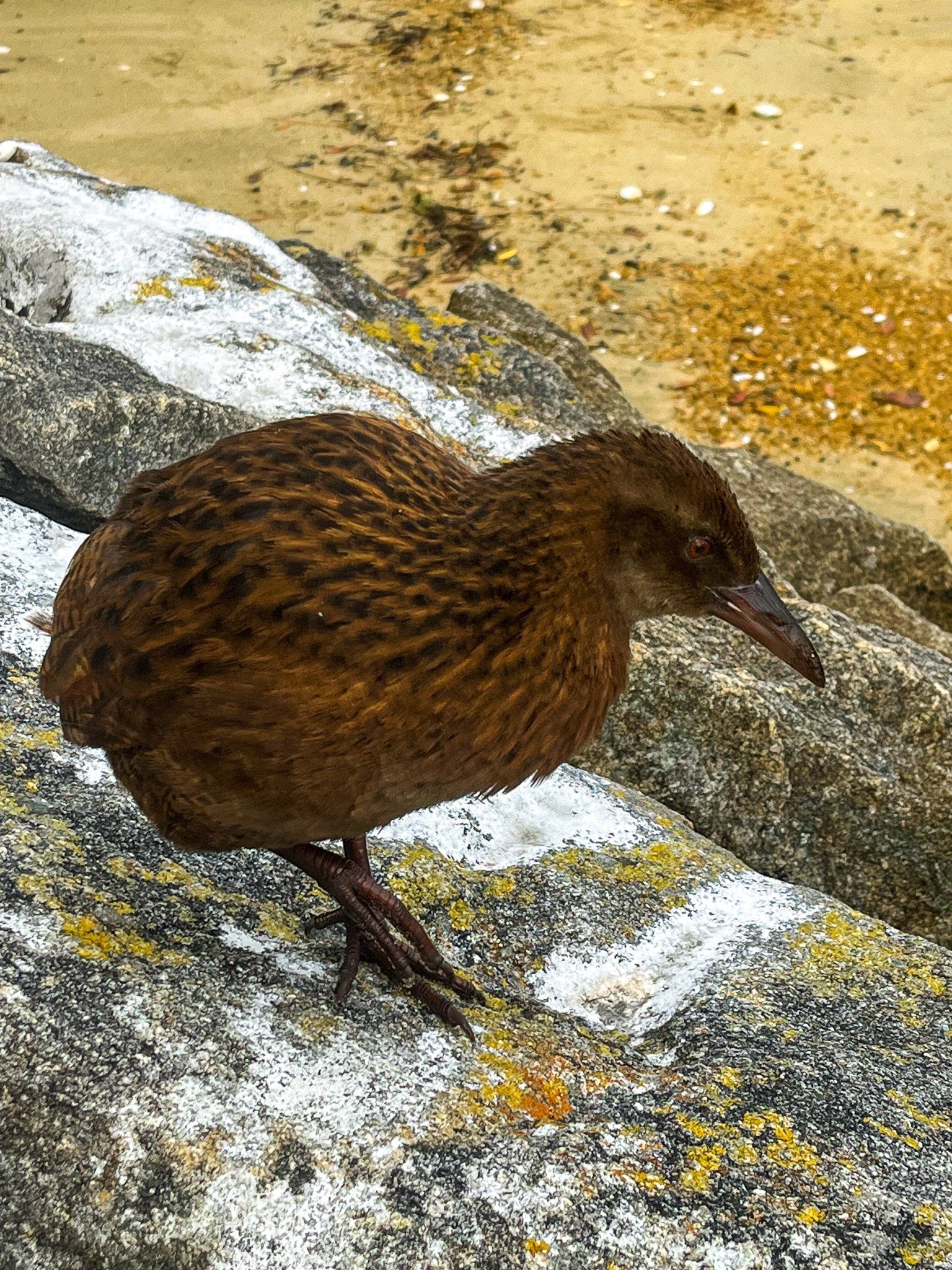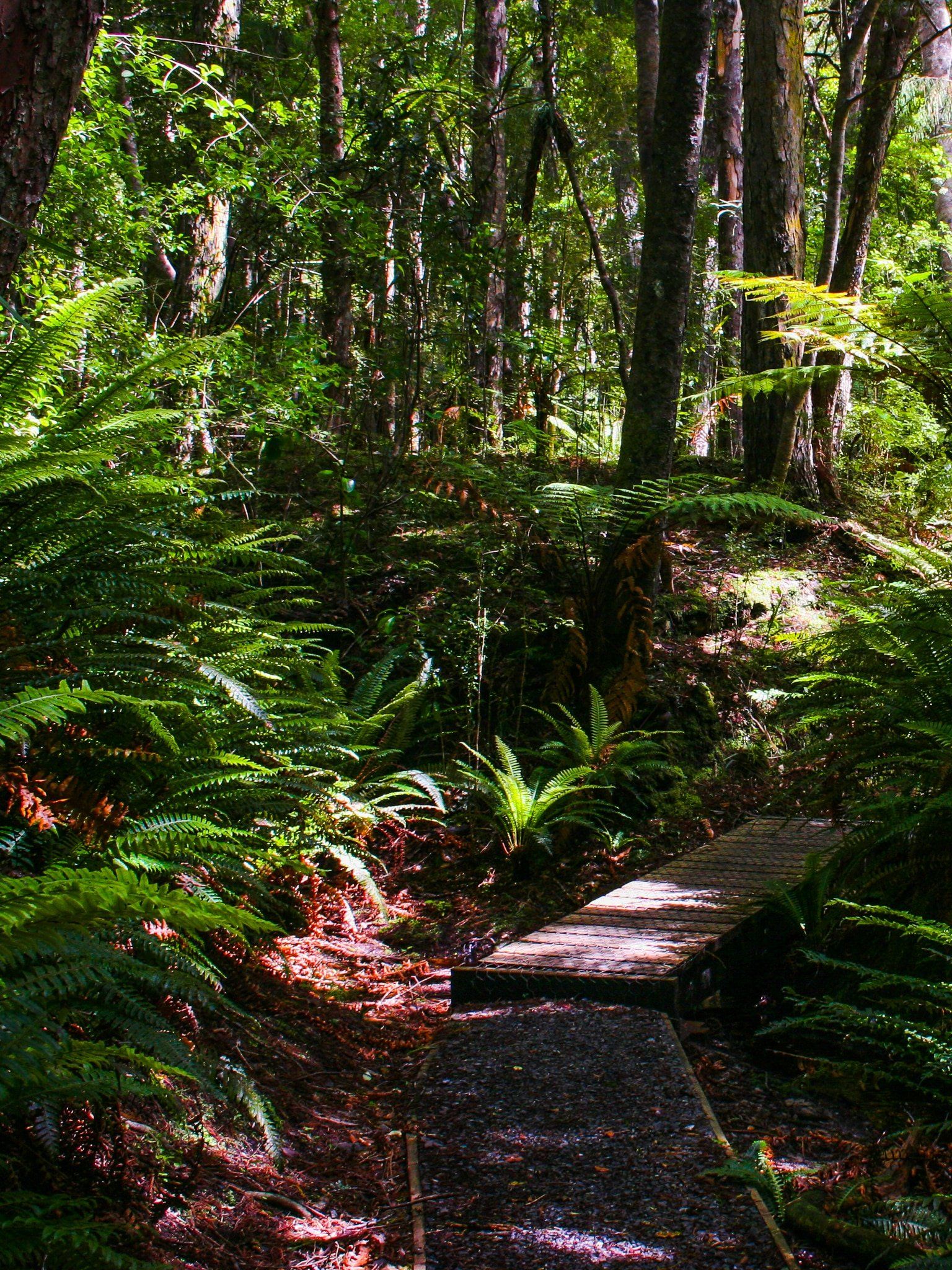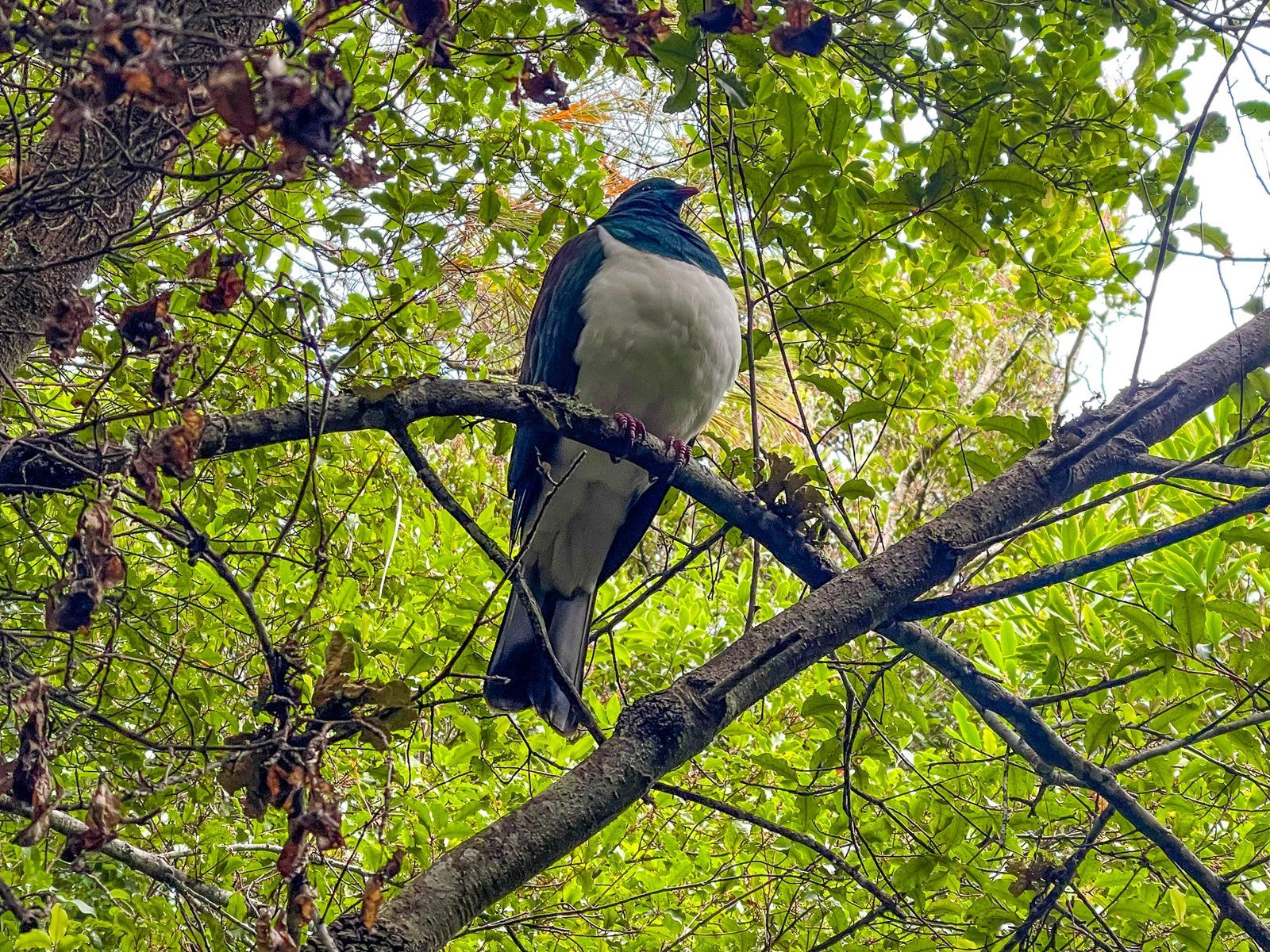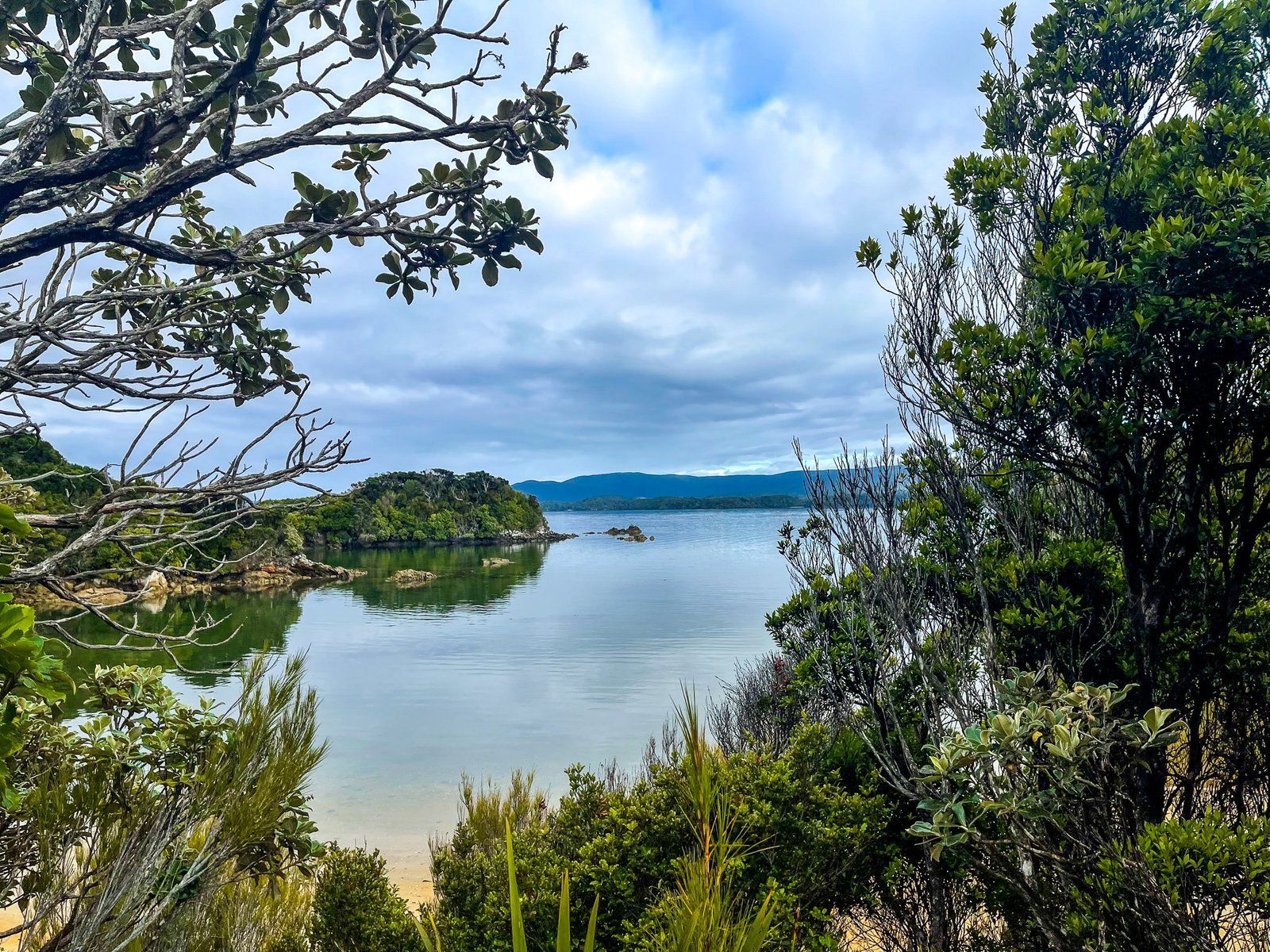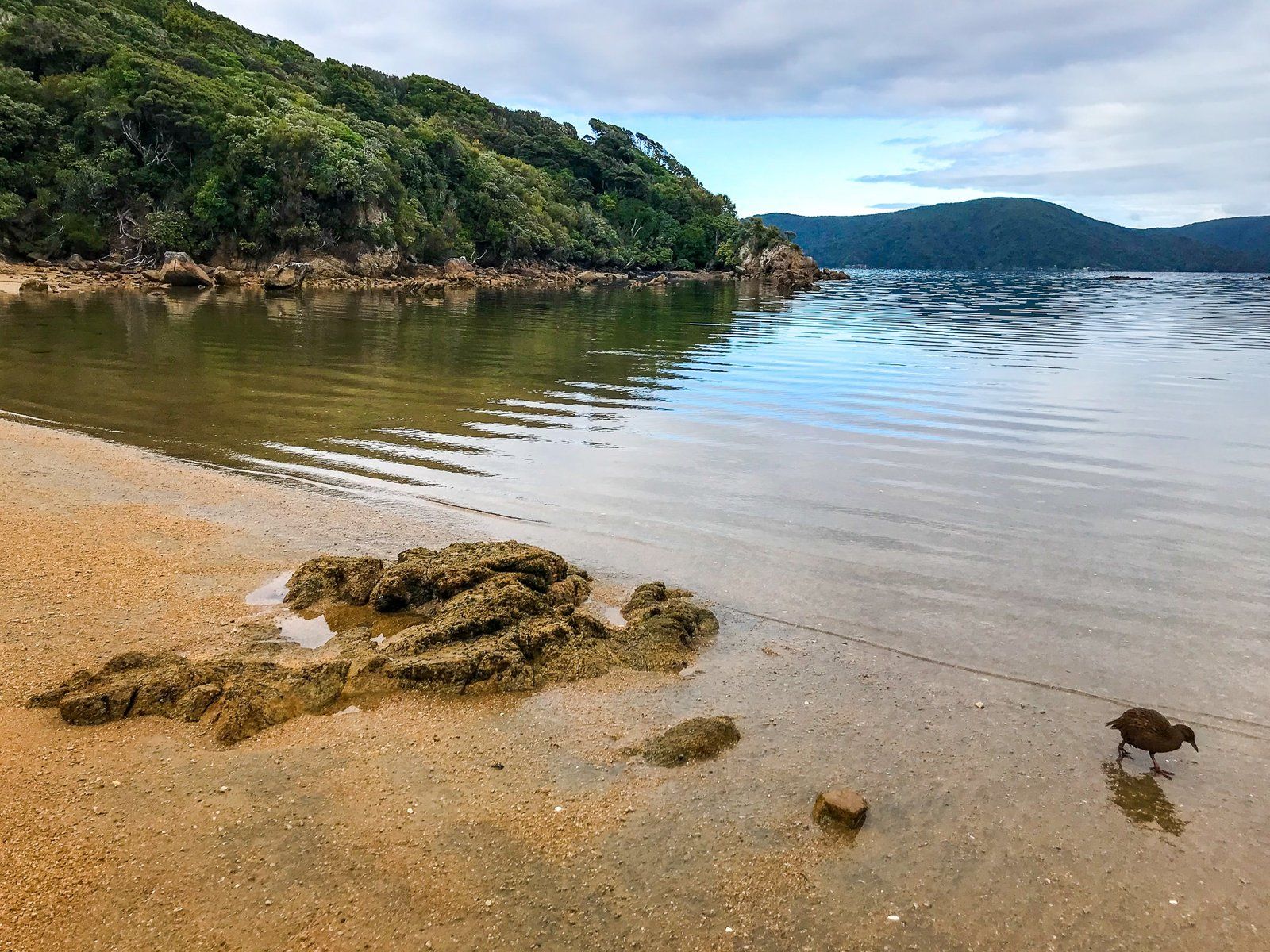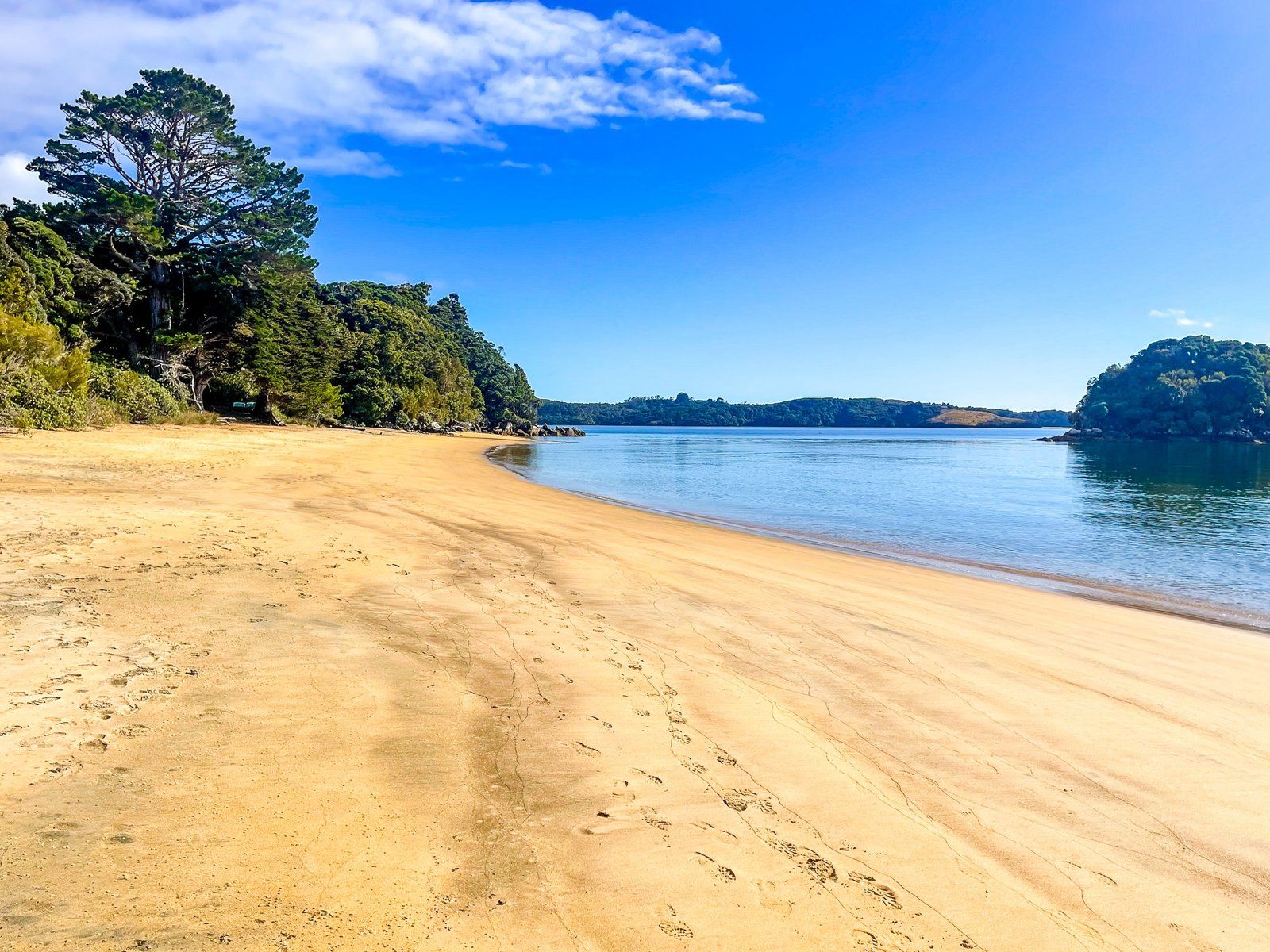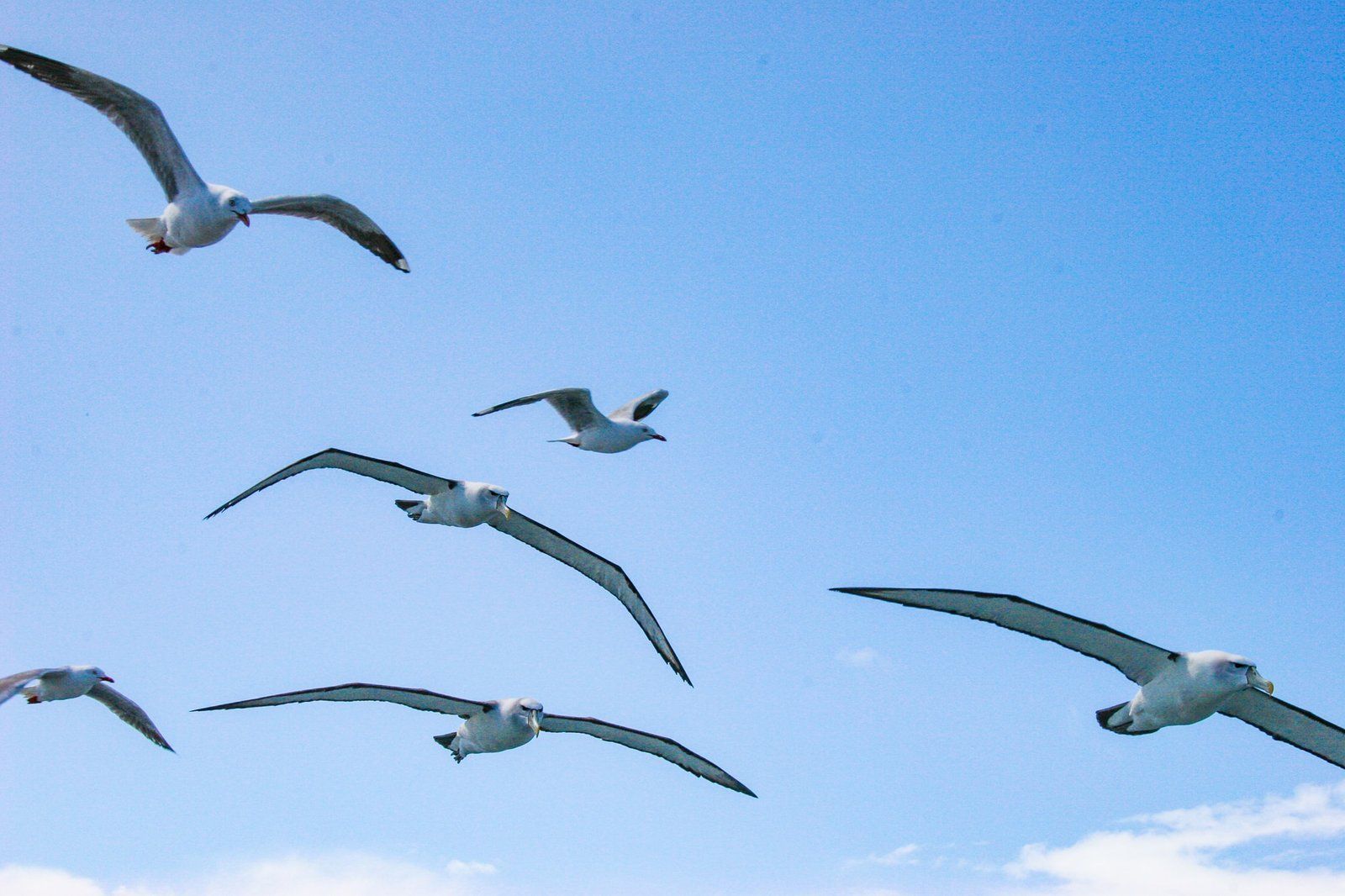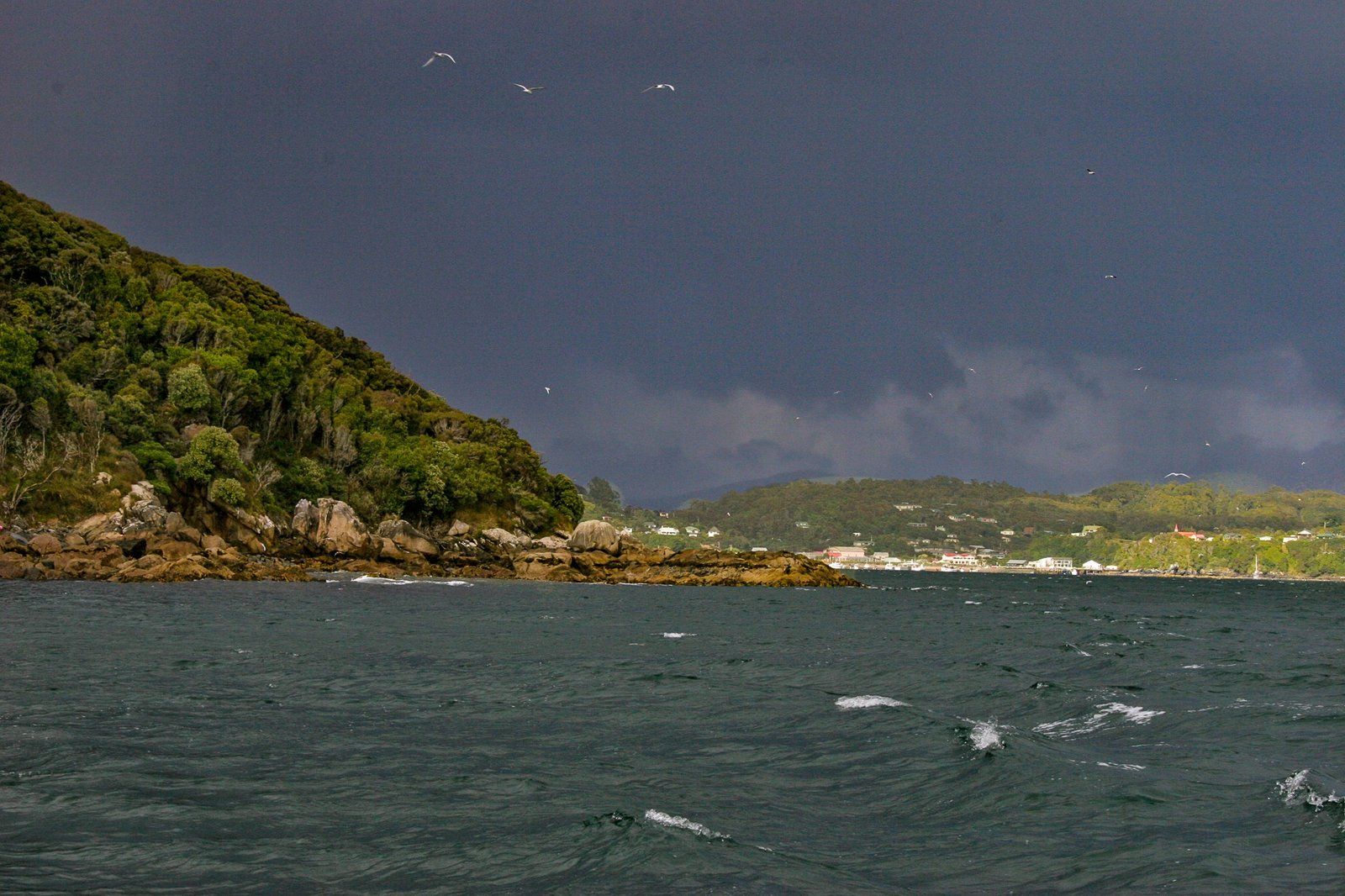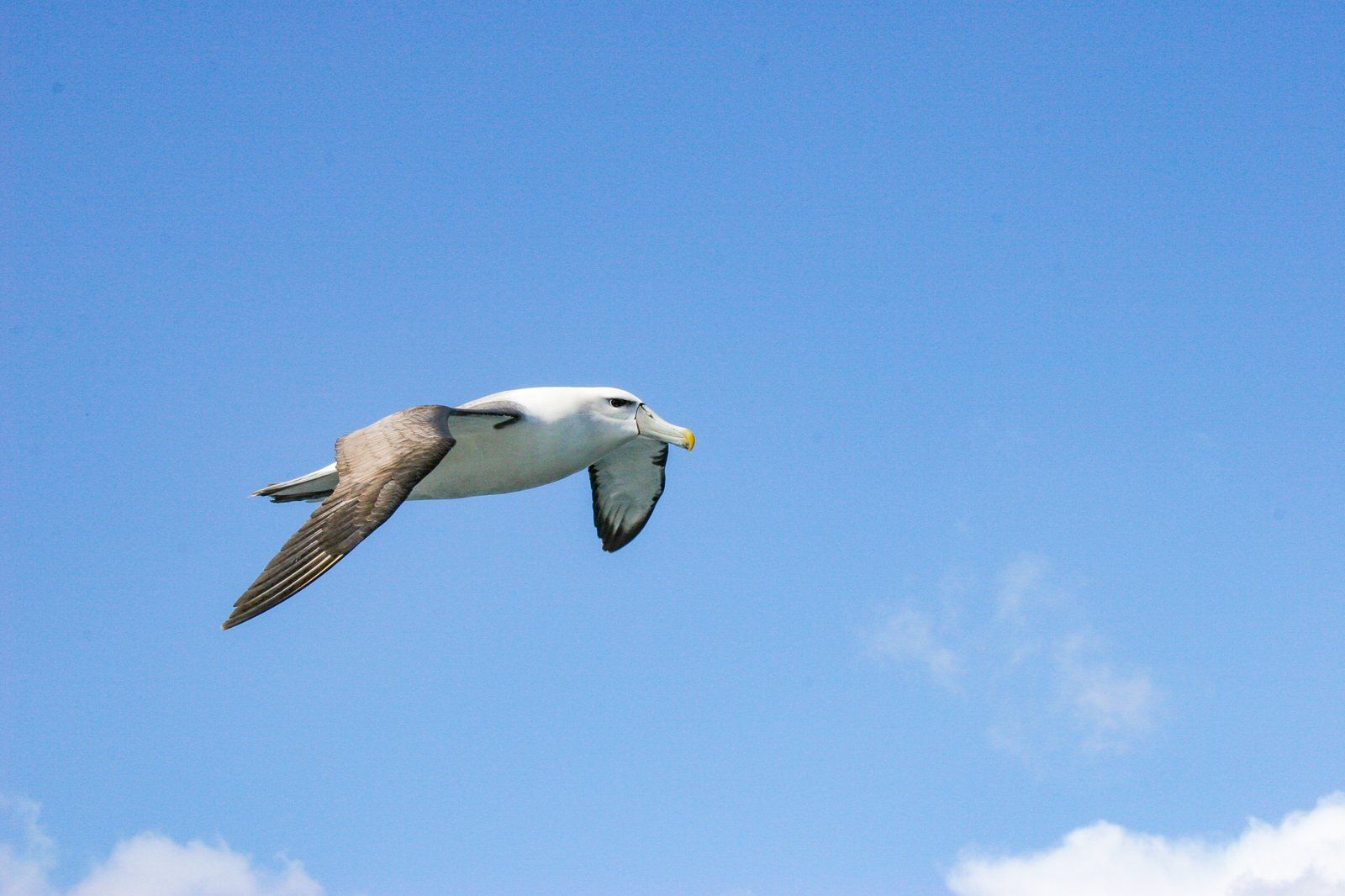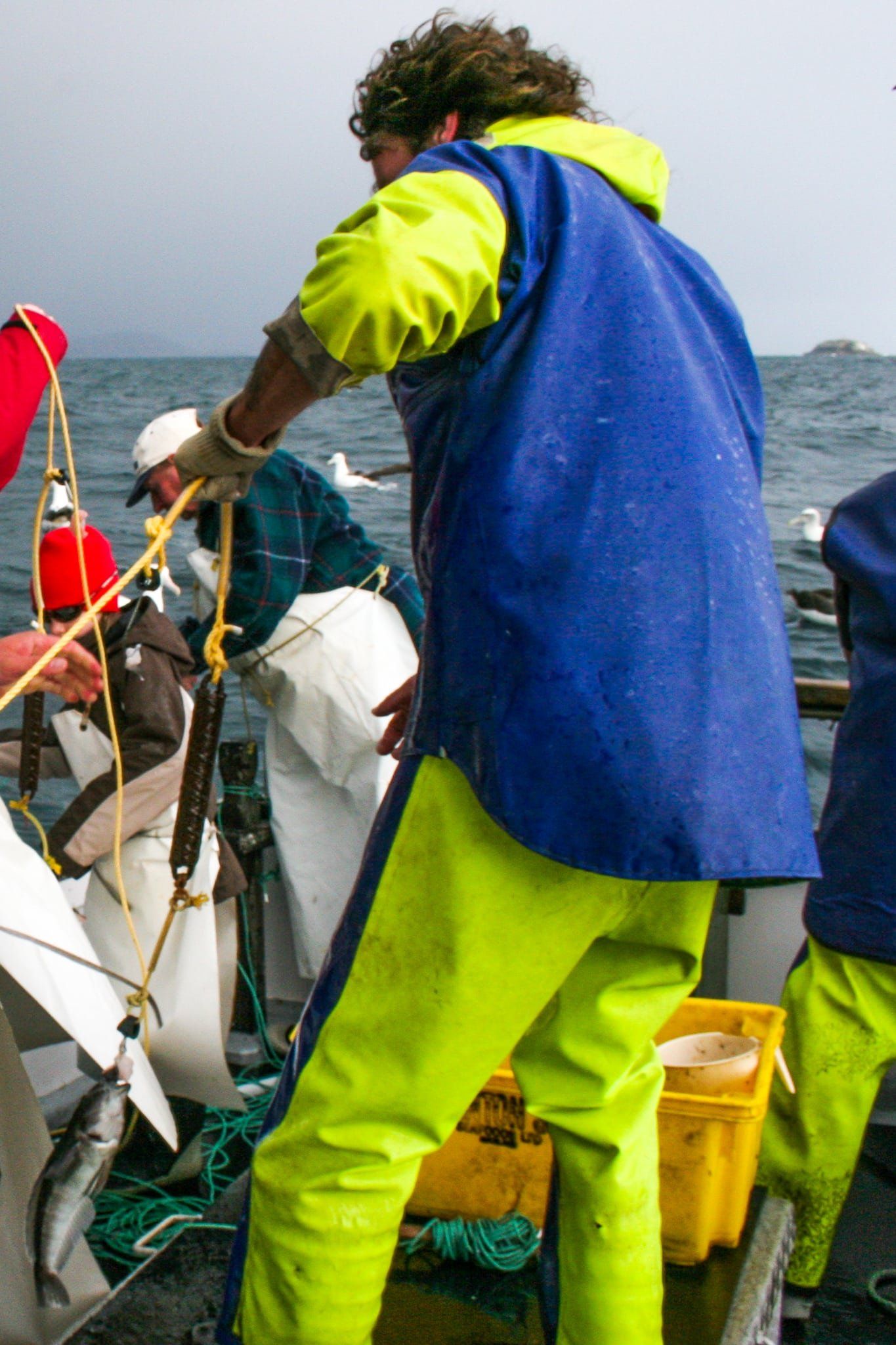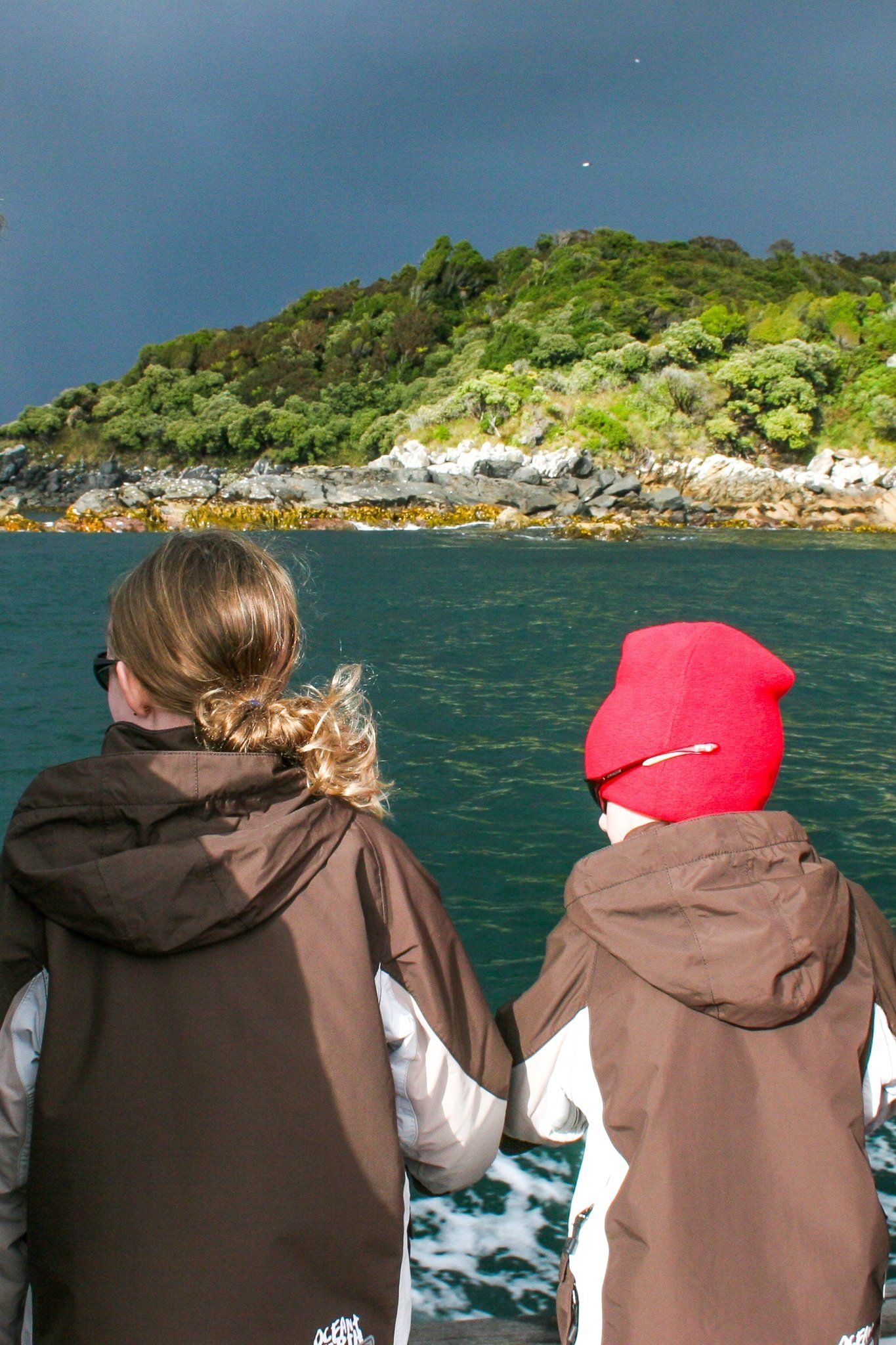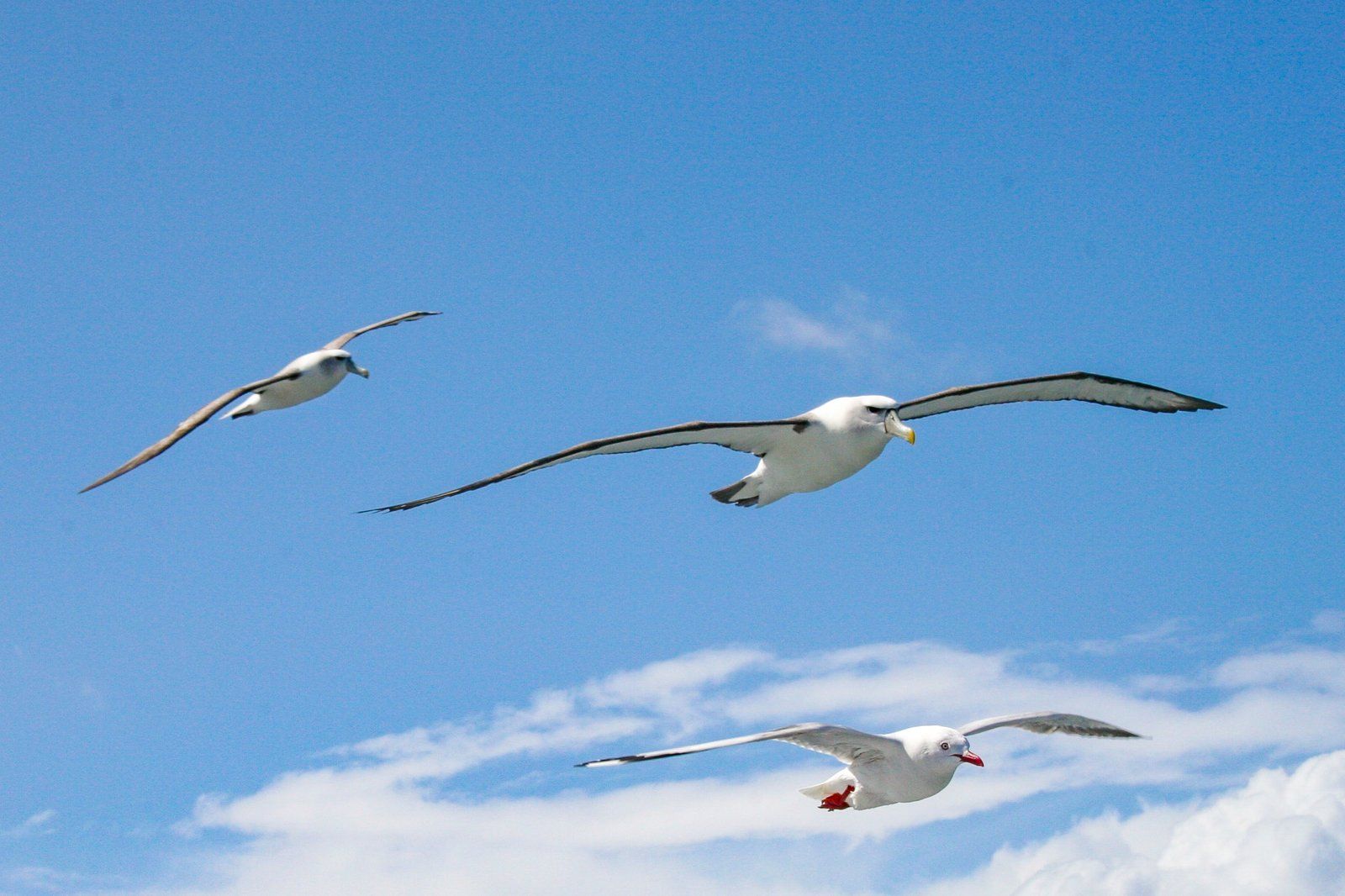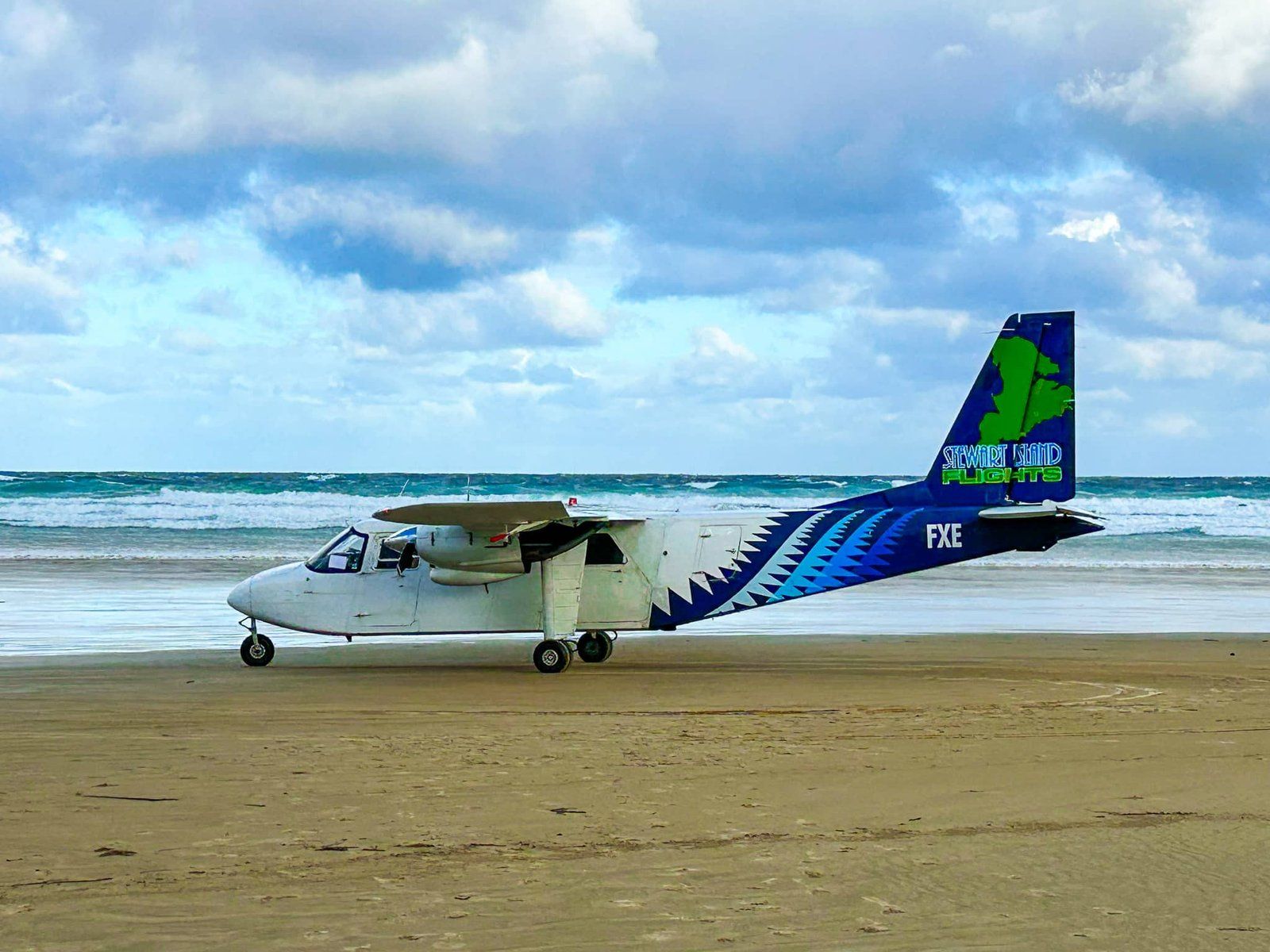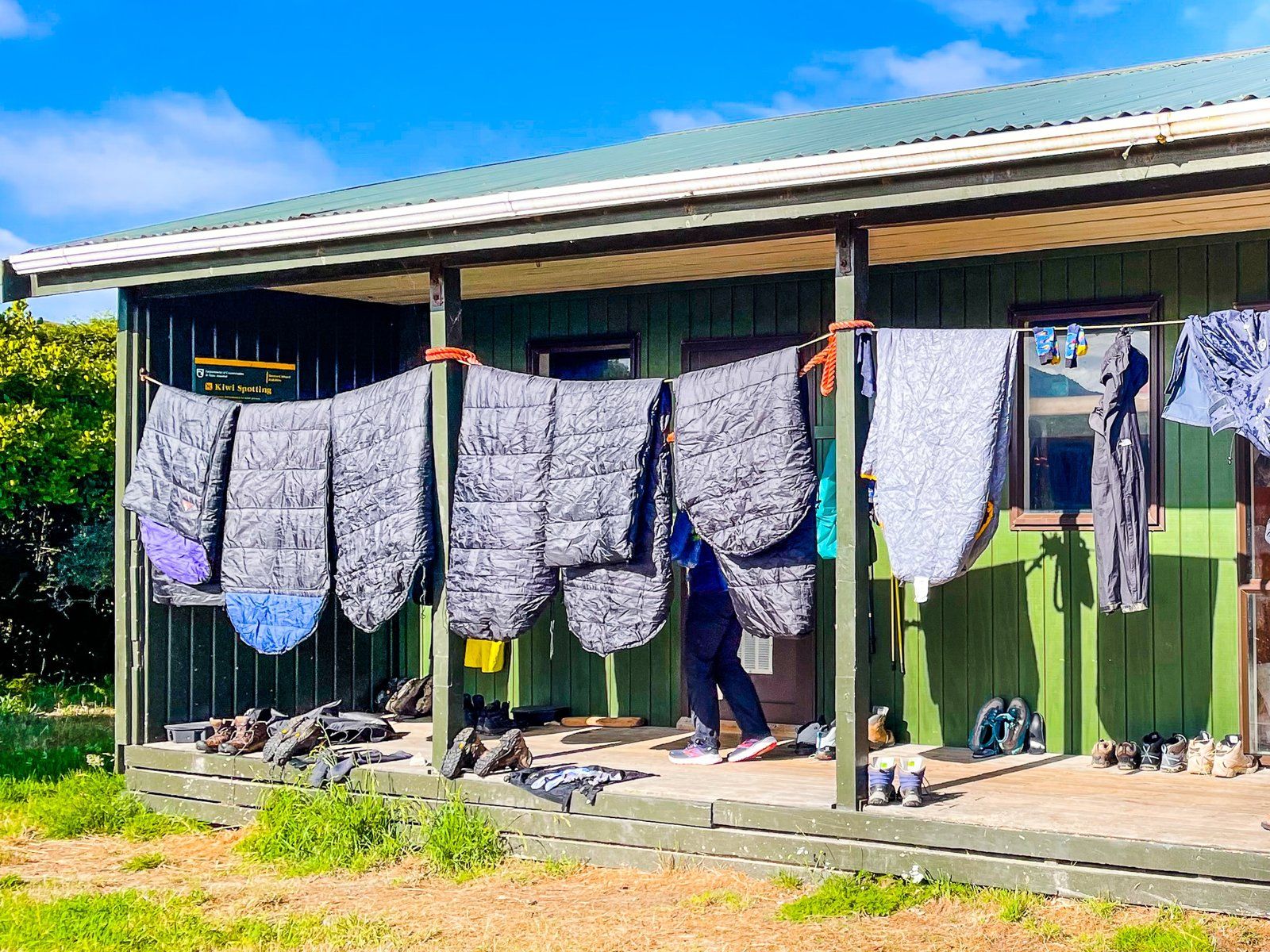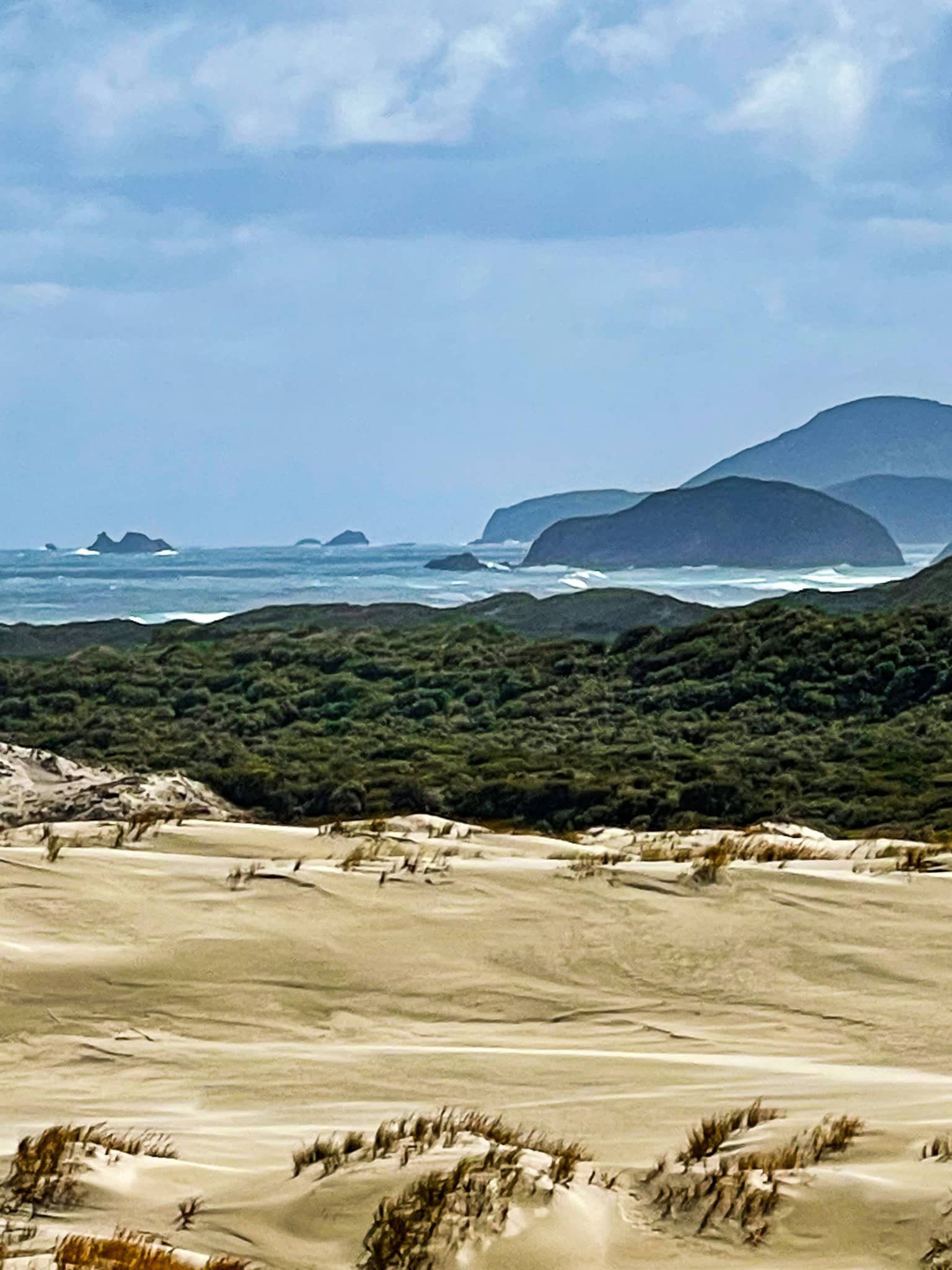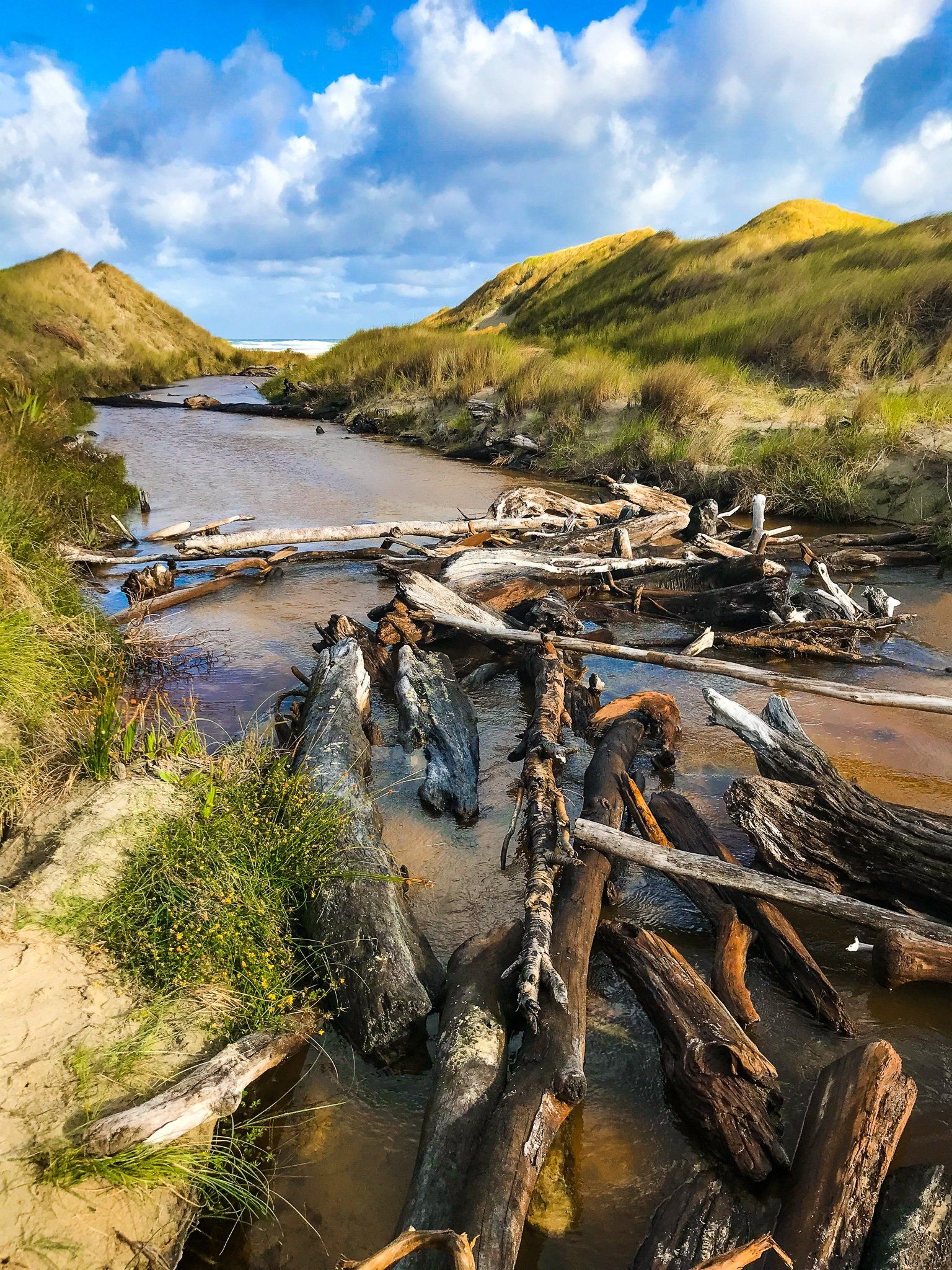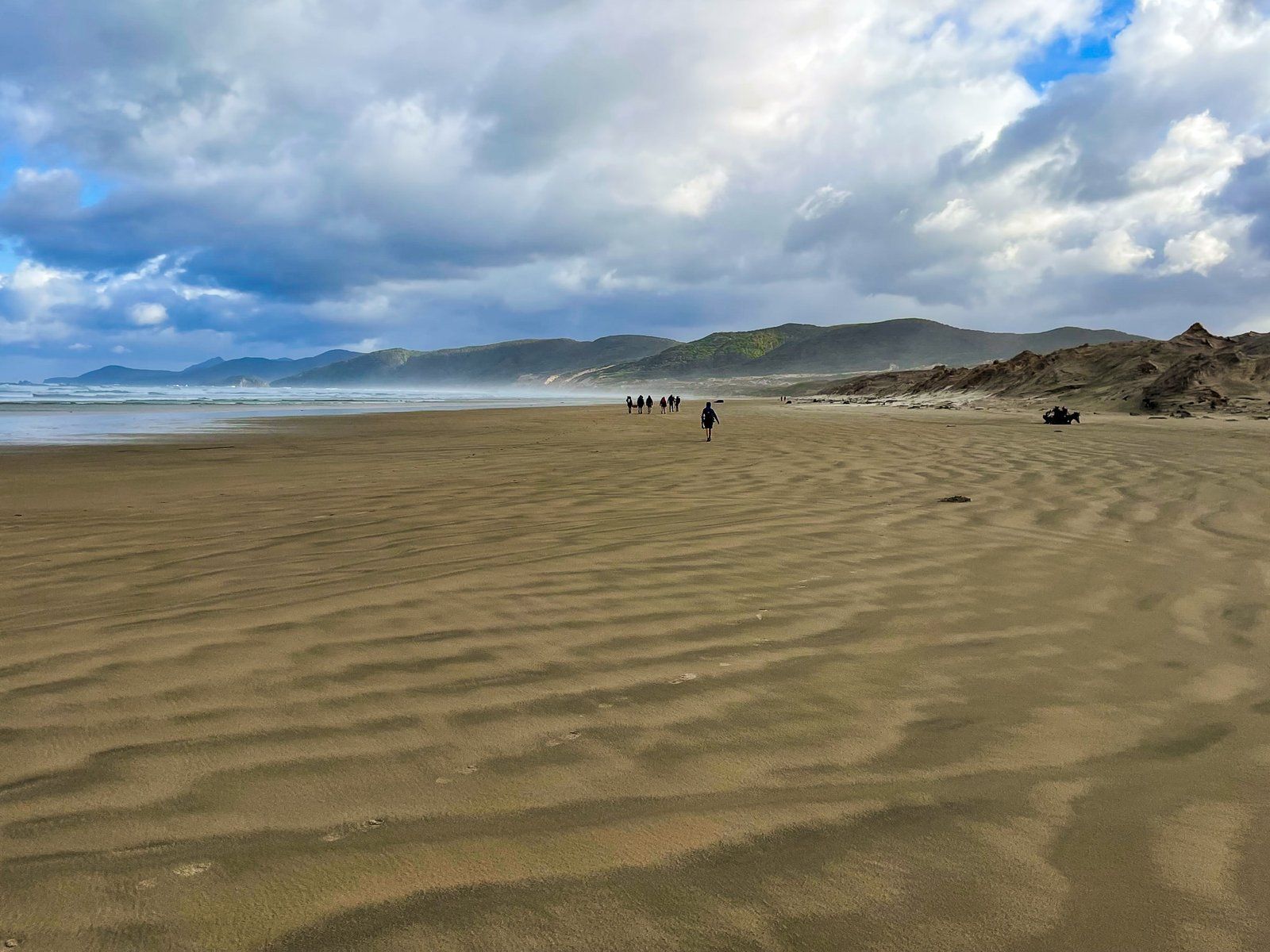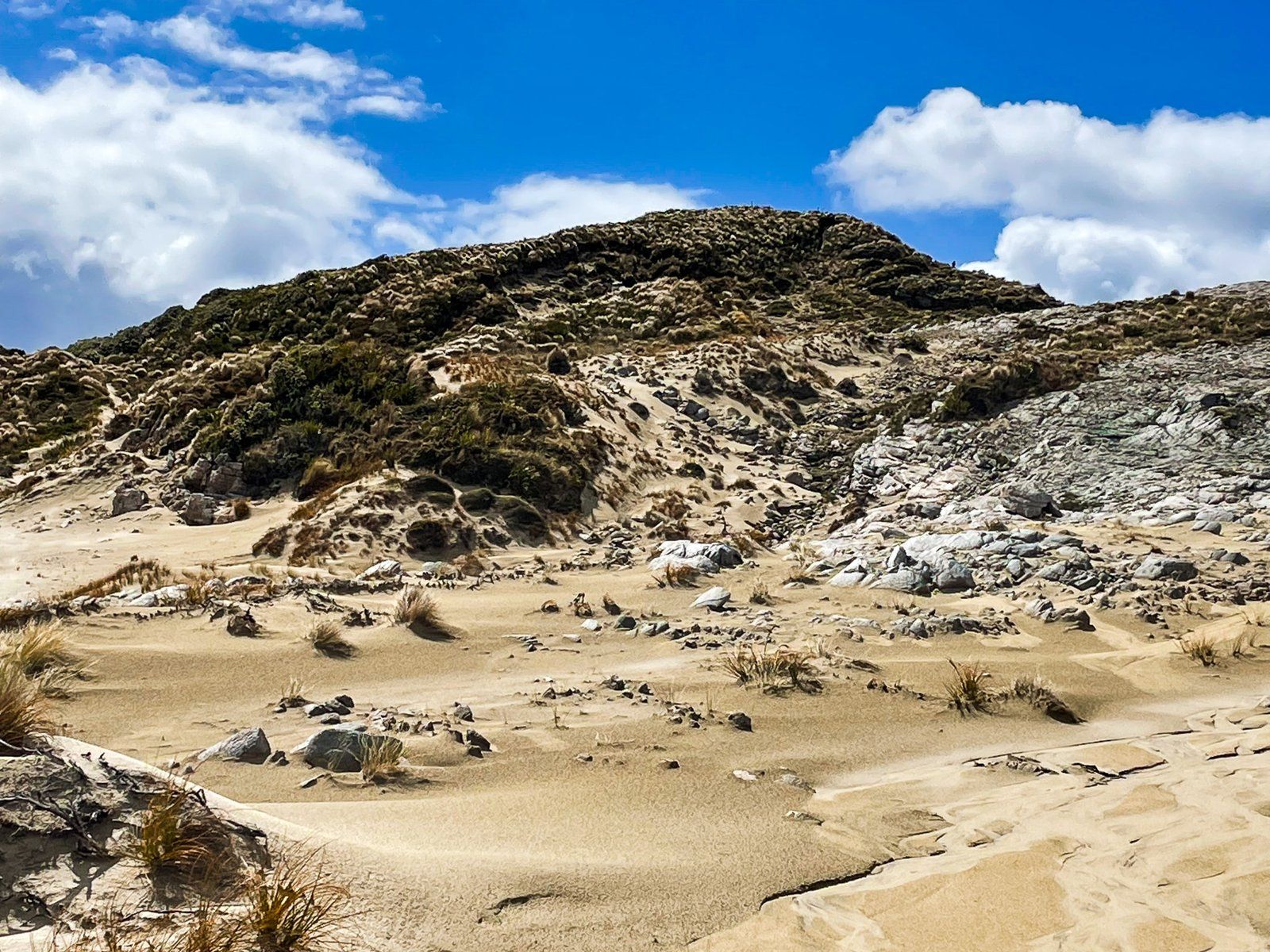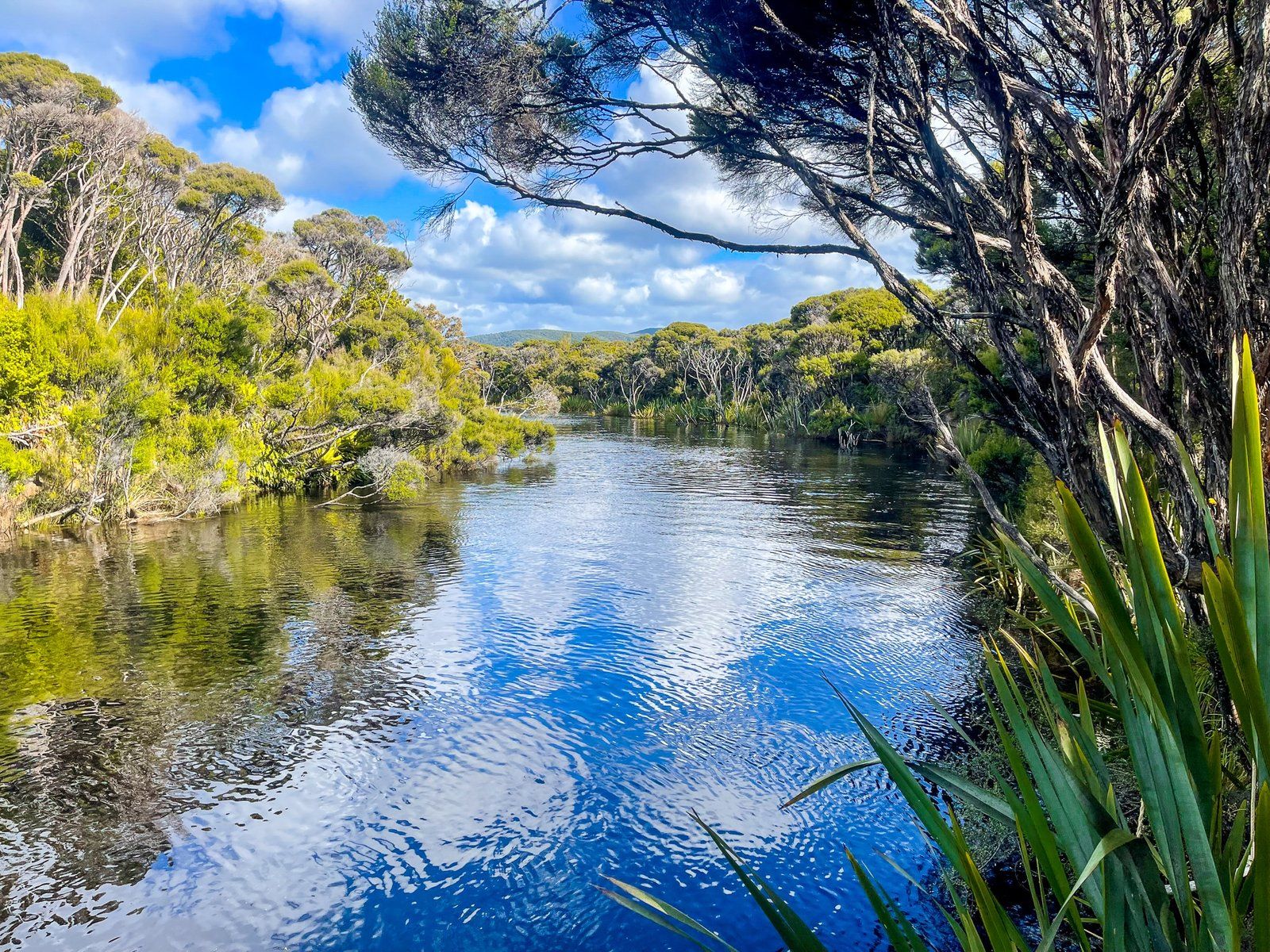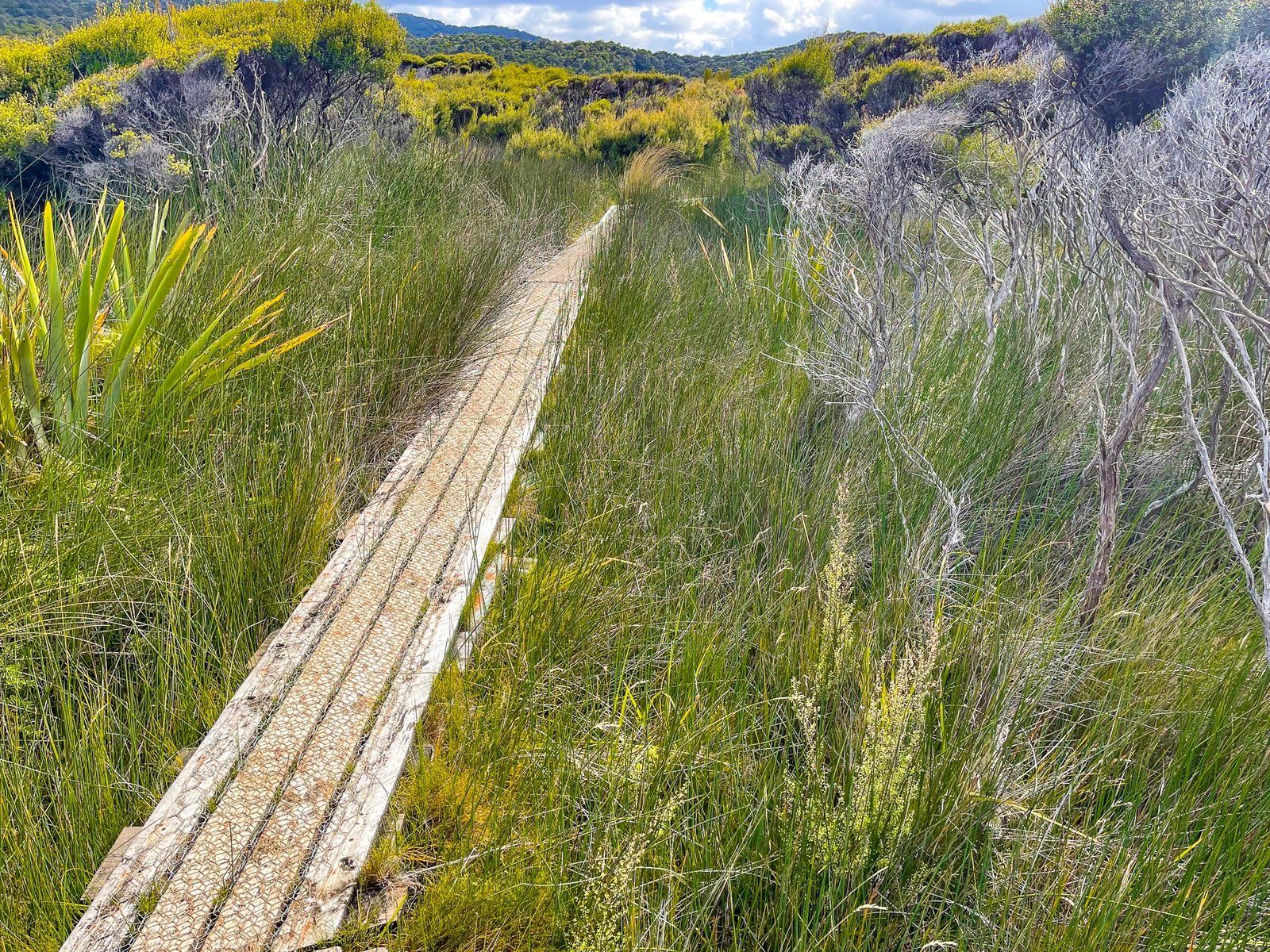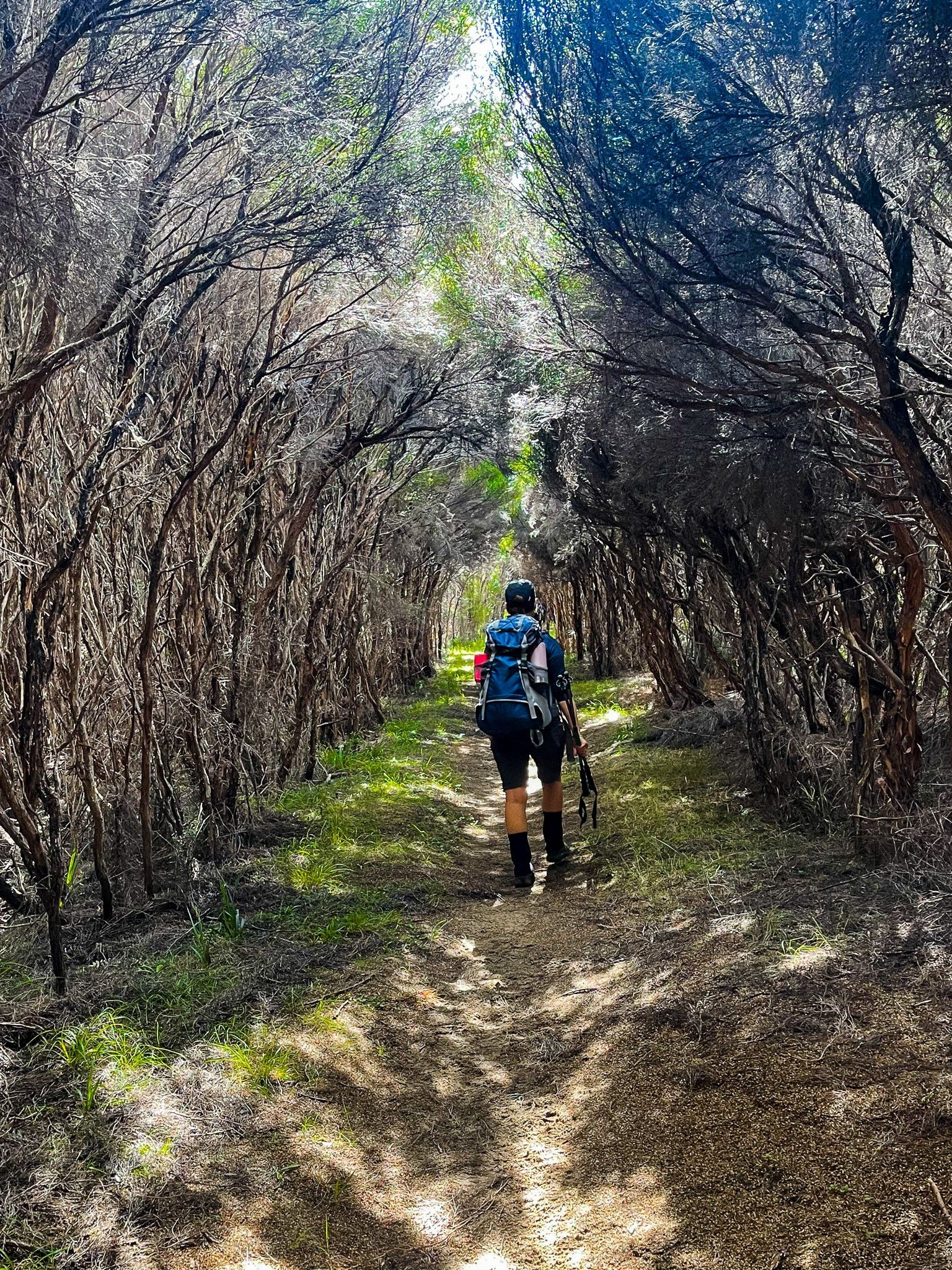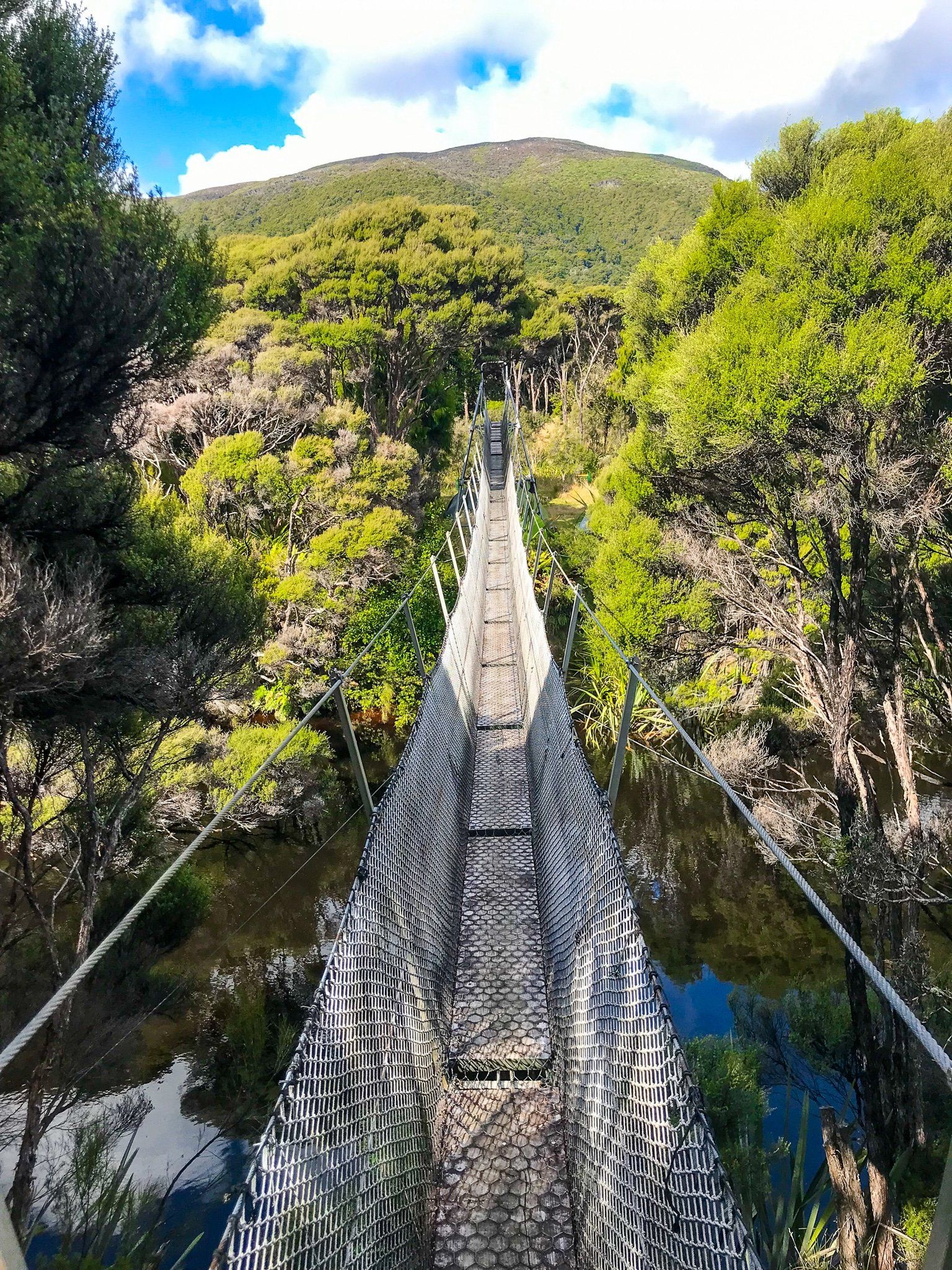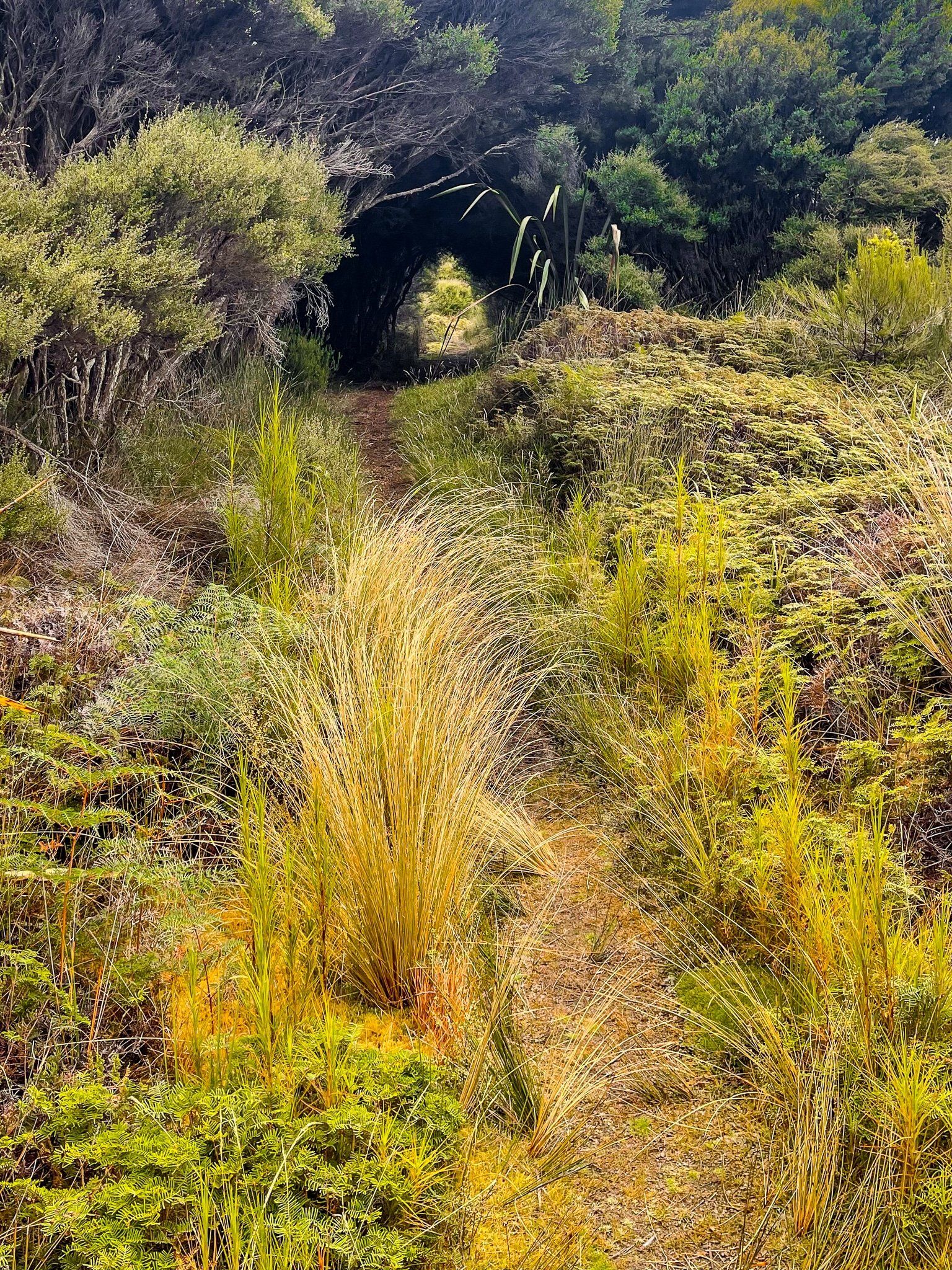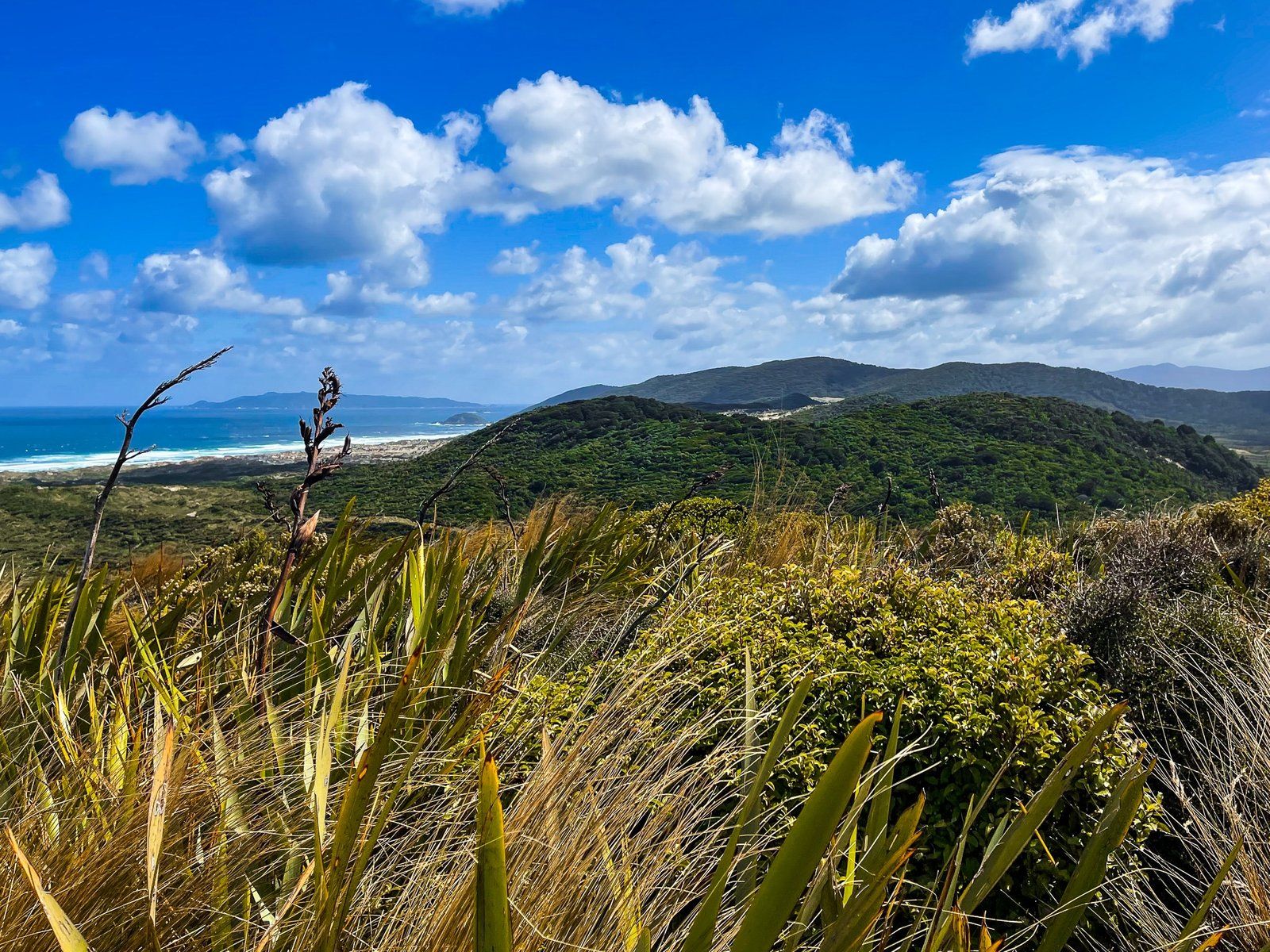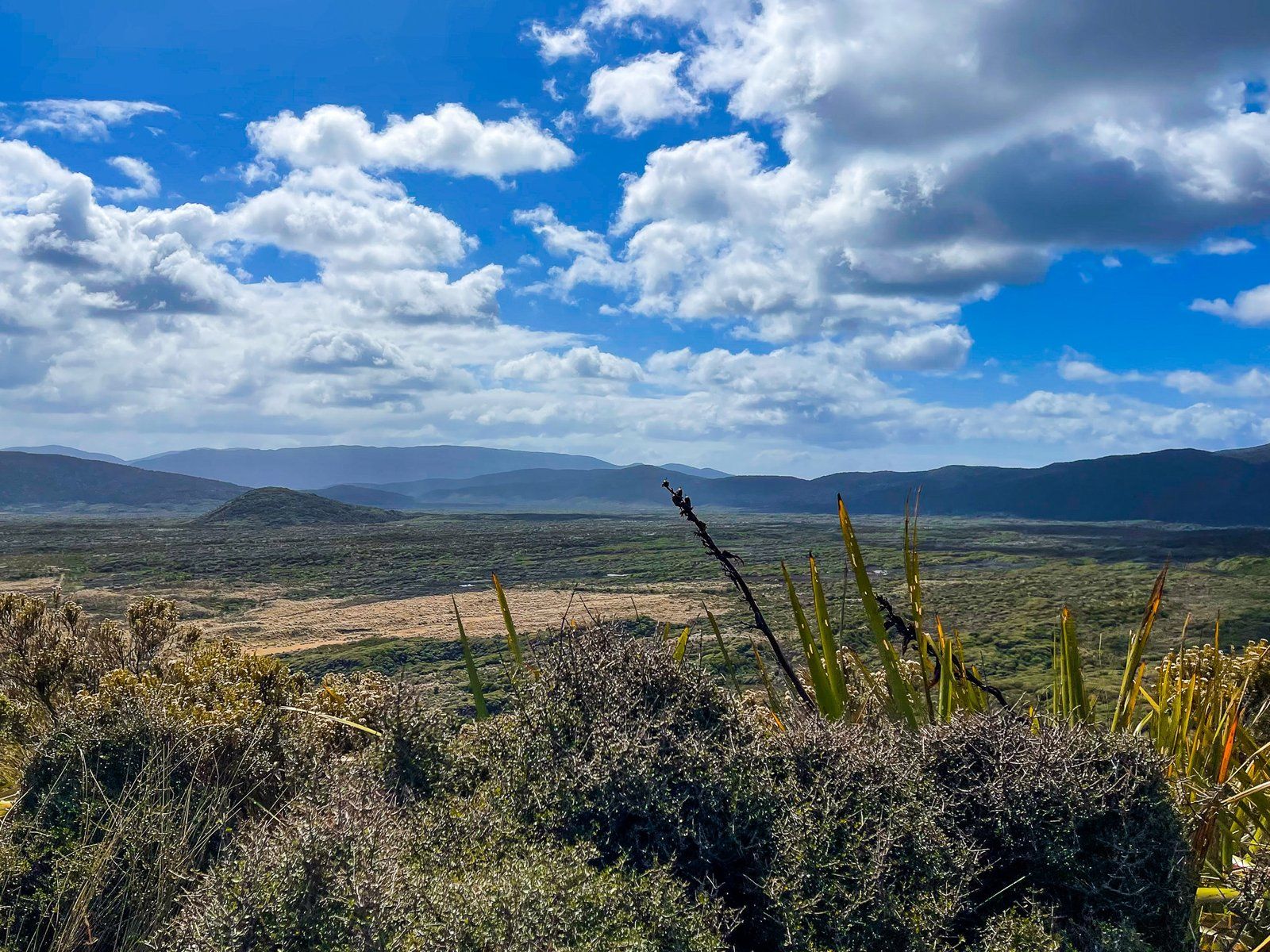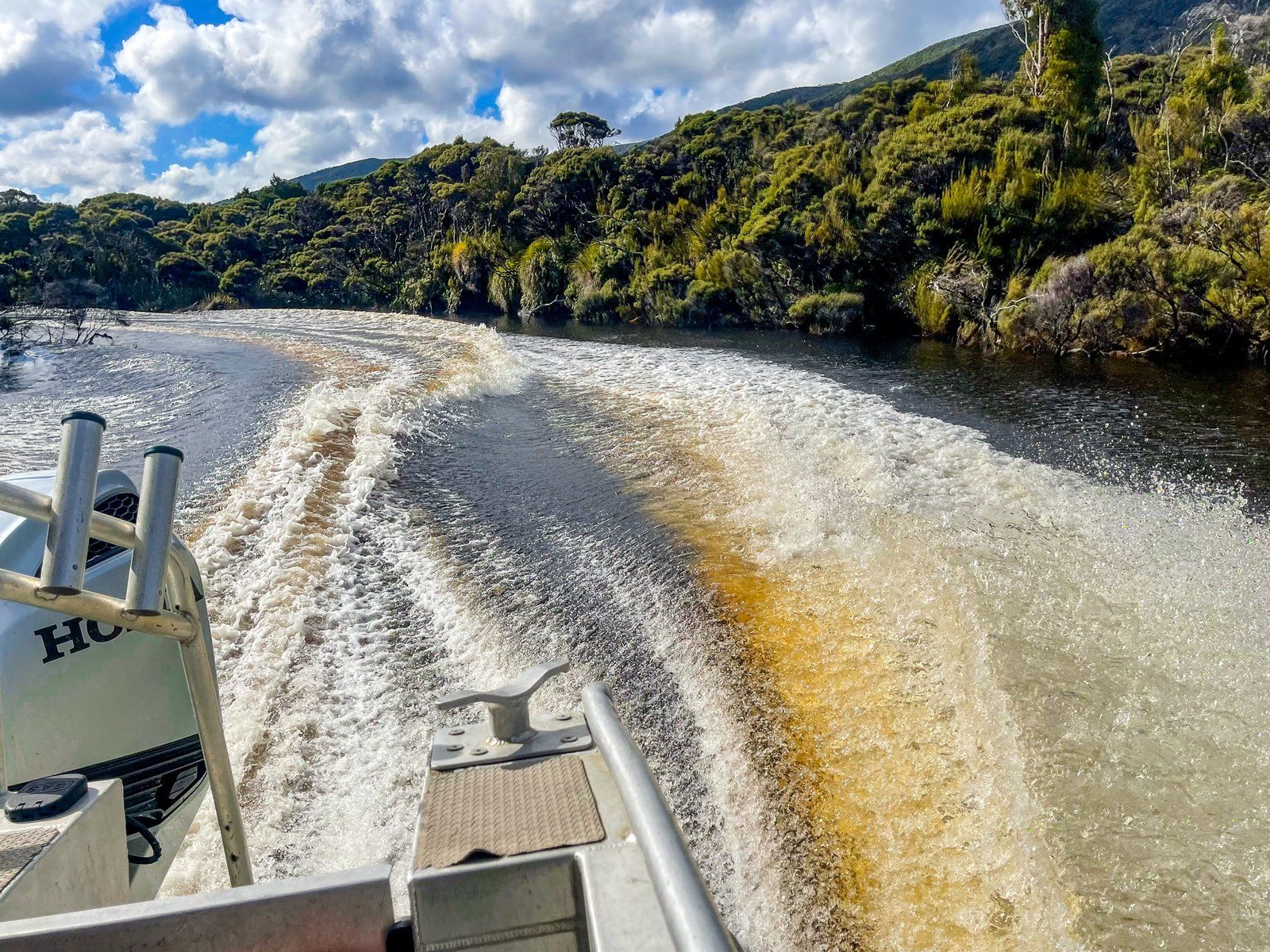Stewart Island / Rakiura is probably the closest you can get to experiencing what NZ was like pre-human settlement, without leaving civilisation behind – if you consider the single town, Oban, to be civilised. If you’re after a trip with few humans, plenty of bird life, lush native bush walks, and a rugged coast (with or without home comforts), you can’t do much better than this.
Due to its remoteness, the island never underwent much development. There was sealing in the early 1800s, then fishing, but tourism is the modern day priority. In 2002, 80% of the island was placed into Rakiura National Park and it is also a dark sky sanctuary. Oban on the northeast side is the only town, population of about 400.
The small number of people and lack of historic forestry activity means superb bird life. You’re likely to see natives like kākā (large forest parrots), weka, kererū and korimako (bellbirds) simply by being around Oban. It is also one of the best places to see kiwi, albatross, penguins, seals, and a wide range of other sea and forest birds.
The Māori presence dates back to the 1400s and the name Rakiura means glowing skies, for the Aurora Australis. The European name recognises William Stewart who was the first to formally prove it was an island in 1809. Thirty kilometres away from the South Island across the Foveaux Strait, it is the third-largest island in NZ. It is generally hilly (rising to 980 metres at Mount Anglem) and densely forested.
You can get there by plane or ferry and even a one night stay in Oban is worthwhile, with extra days depending on how much hiking you want to do. Although the weather is mild year round, it is changeable – be prepared for rain!
Many thanks to Melanie Tollemache, Roger Partridge, and Geoff Olliff for supplying photos.
Travelling to Rakiura Stewart Island
To reach Rakiura most people take a ferry, a medium sized catamaran, from Bluff to Oban (Halfmoon Bay). The boat trip takes an hour and it can be a rough and choppy ride. We recommend gingernut biscuits or ginger tea to calm your stomach if you are prone to motion sickness.
The other option is to take a small plane from Invercargill airport with Stewart Island Flights. On a clear day, the views of the islands are pretty incredible. The plane normally takes you to Oban airport, but you can have beach landings at four beaches on the west side of the island, including Mason Bay.
Once in Oban, everything is easily walkable, including access to the multi-day tracks. The road network is limited, however, you can rent a small car or bike if you need to get around more quickly.
Oban and Halfmoon Bay
Oban, the only town on Rakiura Stewart Island, is small and rustic and was once a pure fishing village. These days, the fishing industry is as much about tourism as it is about making a catch, so don’t pass up the opportunity to go out on one of the boats.
The town mostly sits within modest Halfmoon Bay. There are short road extensions north to Horseshoe Bay, and then Lee Bay for the start of the Rakiura and Northwest Circuit tracks, west to the airport and south to Paterson Inlet / Whaka a Te Wera and access to Ulva Island. You could easily walk the roads in a day, plus several short connecting tracks, much of it surrounded by native forest and birdlife.
The obvious landmarks are the port terminal and nearby visitor centre and South Sea Hotel, all just a couple of minutes of walking time. Various other accommodation options are scattered around Oban, along with several cafes, restaurants and a grocery store.
If you walk north on the roads, sticking to the coast, there are three nice beaches with surprising golden sand – Bathing, Butterfield and Bragg Bay. To the south over Peterson Hill is Ringaringa Beach and Ringaringa Point.
Short Walks of Oban
Hiking is one of the main attractions of Rakiura Stewart Island. You can spend seven to ten days on the famously muddy North West Circuit and/or the Southern Circuit Tracks, or three days on the Rakiura Track, one of the Great Walks. Or you can just walk around one or all of several short tracks that connect to Oban, including Golden Mound at the start of the Rakiura Track, Fern Gully and Ryans Creek near the airport, the Golden Bay and Petersen Hill tracks to the south and the Ackers Point Track to Fisherman Point. Another (bit) longer option is the Horseshoe Point Track which connects Bragg Bay to Horseshoe Bay via the coast, then a short walk back down the road to Oban.
You can also do the first section of the Rakiura Track Great Walk, starting from Lee Bay, as a day walk. In any event you will see variations on the pretty coastline, stunning native forest, and plenty of birdlife. You may also see a seal or two.
Ulva Island
Within a day in and around Oban on Rakiura, you will probably see kākā, kererū, and korimako, but the Ulva Island sanctuary is the place for extra-rare native land bird sightings. Bird life includes tīeke (saddleback), mohua (yellowhead), kiwi, native robins and parakeets, tītitipounamu (rifleman), and weka.
Ulva is just a short boat trip from Golden Bay, a walkable kilometre or so south of the Oban ferry terminal. The walk around the mostly forested island is similarly an easy 3 to 4 kms on loop tracks between Flagstaff Point, West End Beach, and Boulder Beach.
Flagstaff Bay also has a little bit of history. From 1872 to 1923, the local postmaster would raise a flag there to alert the communities around Patterson Inlet to the arrival of the mail boat. Extensive gardens were established including exotic tree species, some of which have survived. The island’s tracks were first established in the 1880s and in 1922 it became the first scenic reserve in New Zealand. The original postmaster’s 7 hectare homestead is still in private ownership, with the rest of the island managed by DOC.
Fishing with Albatross
If you’re interested in getting up close with some sea birds (and don’t have a problem with sea sickness), a ride on a tourist fishing boat is the way to go. You can organise a trip in Oban or prior to your visit. From there, it is several hours on a boat, line fishing for cod, which is then filleted and shared amongst the “crew”.
But the best bit is the chance to see albatross up close. Along with a variety of other seabirds, albatross gather around the boat, eager to take part in the action as the fish are processed. To see birds this big up close is an astonishing experience.
Mason Bay, Stewart Island
Mason Bay is remote and beautiful, on the far western side of Stewart island from Oban. It is unique in having the largest population of kiwi birds in NZ. They can even be seen foraging during the day.
The bay is connected to Oban by the North West Circuit Track, but it’s 36 kms and an eight to nine hour walk one way. A much easier option is to fly into Mason Bay (landing on the sand at low tide) on Stewart Island Flights. Then spend your time around the 19 km long crescent-shaped white-sand bay and dunes, keeping an eye out for kiwi signs.
Mason Bay to Oban
The 14.1 km track between Mason Bay and Freshwater Landing is easy, with a power boat ride providing the connection from the landing to Oban. This saves about 5 to 6 hours of hiking. Starting from Mason Bay beach, it is a one km walk through the sand dunes to the Mason Bay Hut (DOC). Next is a walk through a failed attempt to establish a sheep farm, with old fences, pasture, a shearing shed and the Island Hill Homestead (a living museum).
This is followed by a short wetland boardwalk, with views of the extensive sand dunes behind the Mason Bay beach. Next is a 4 km section alongside the Scott Burn Stream. This is prone to flooding in heavy rain and you should not proceed if the water is above the flood indicator marks at either end of this section.
The track then runs through mānuka shrubland in the presence of korimako (bellbird), miromiro (tomtit) and toutouwai (Stewart Island Robin). There is also a DOC hut at Mason Bay and Freshwater Landing for overnight stays.
Want more South Island Trip Ideas?
Check out our series on the Stunning Southern Route: Best of Fiordland and Best of Milford Road.
